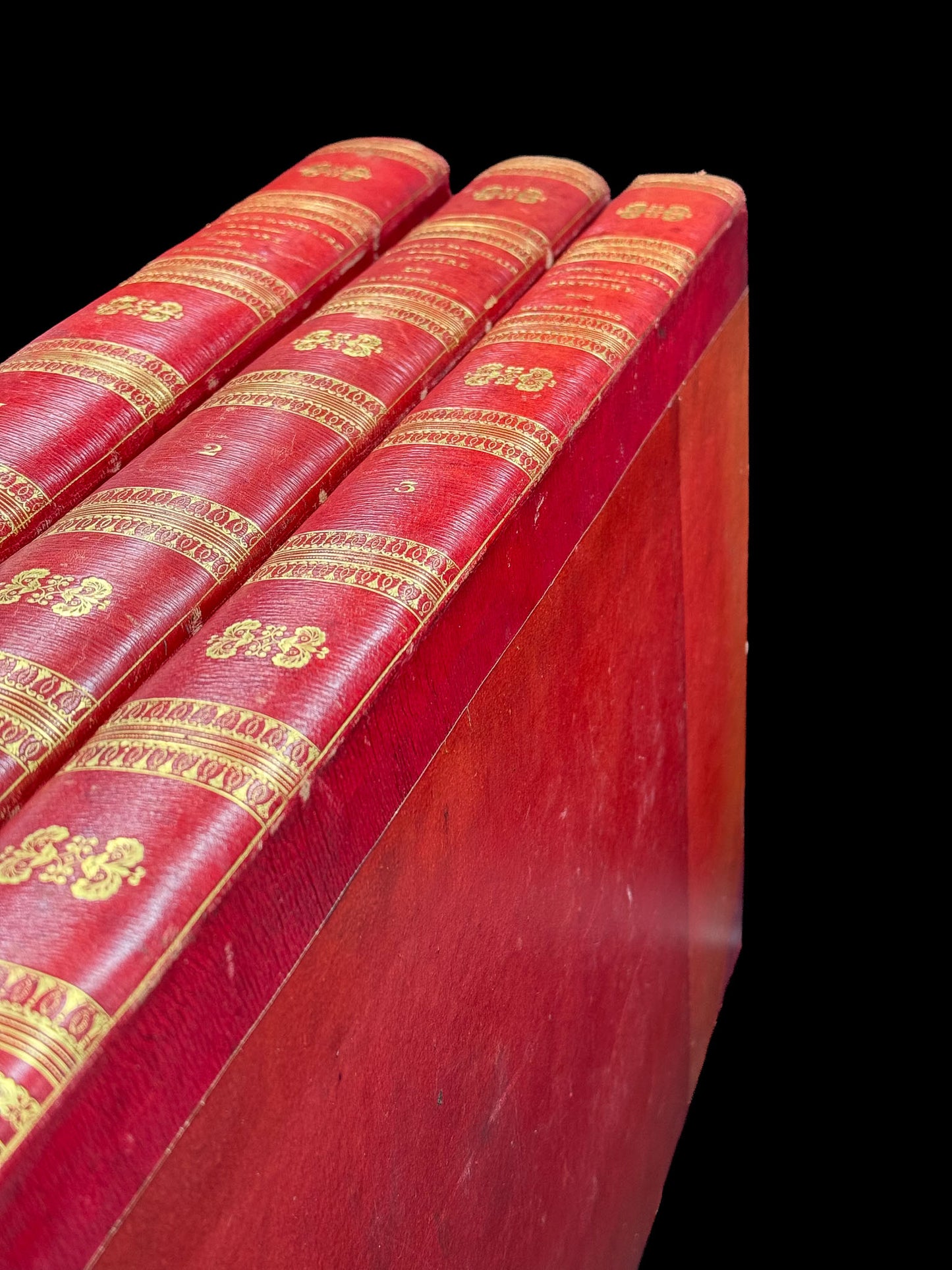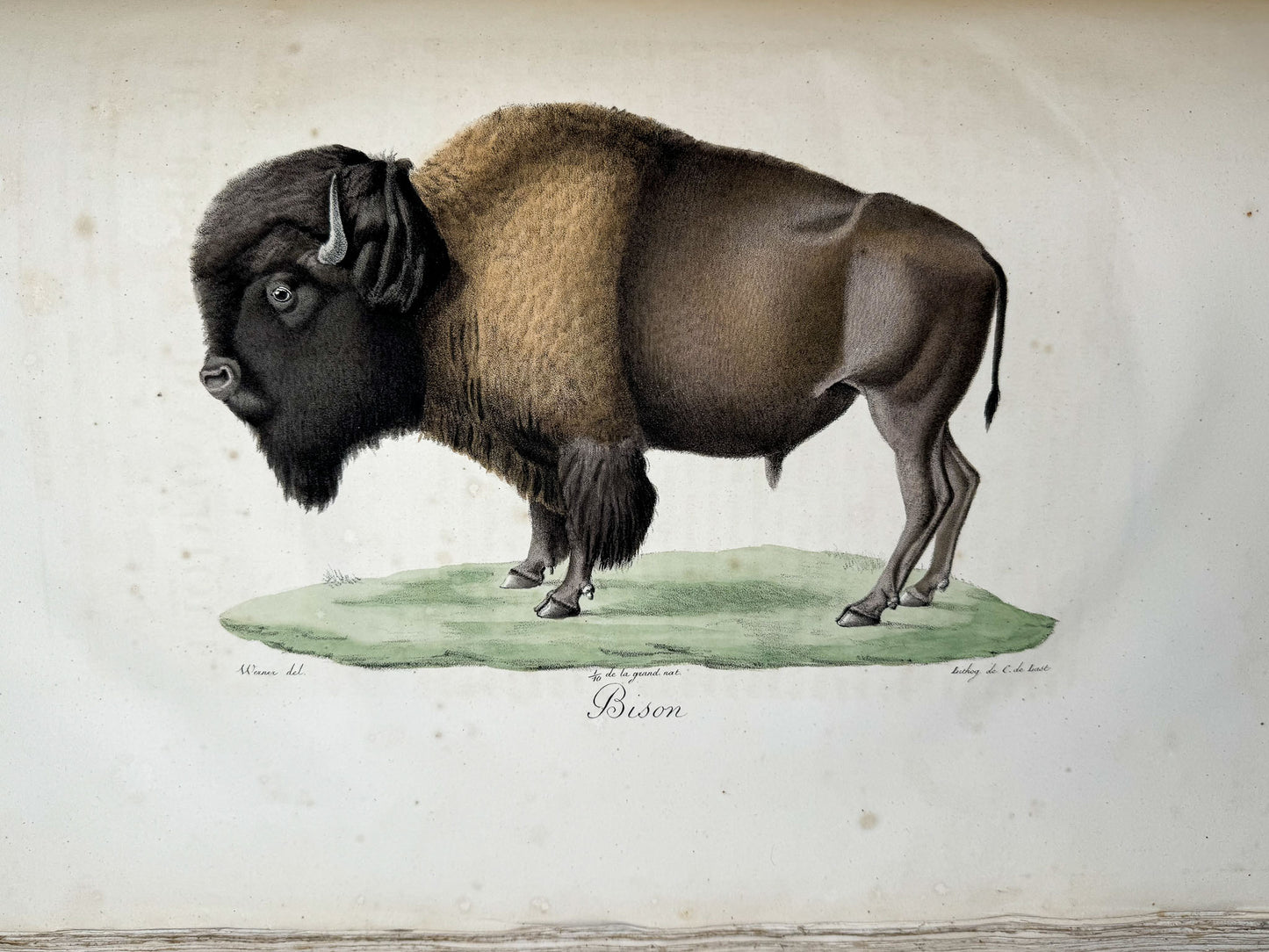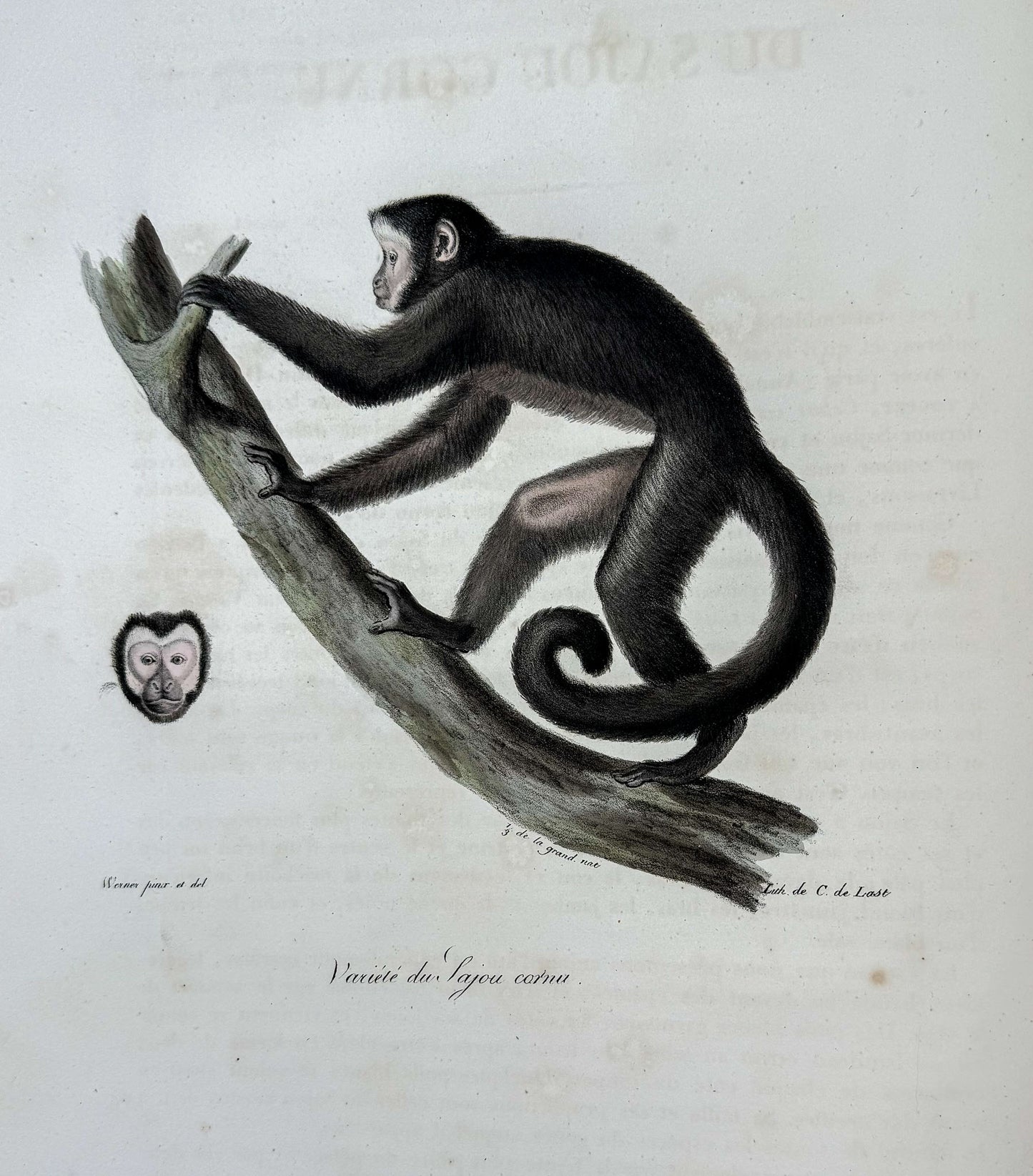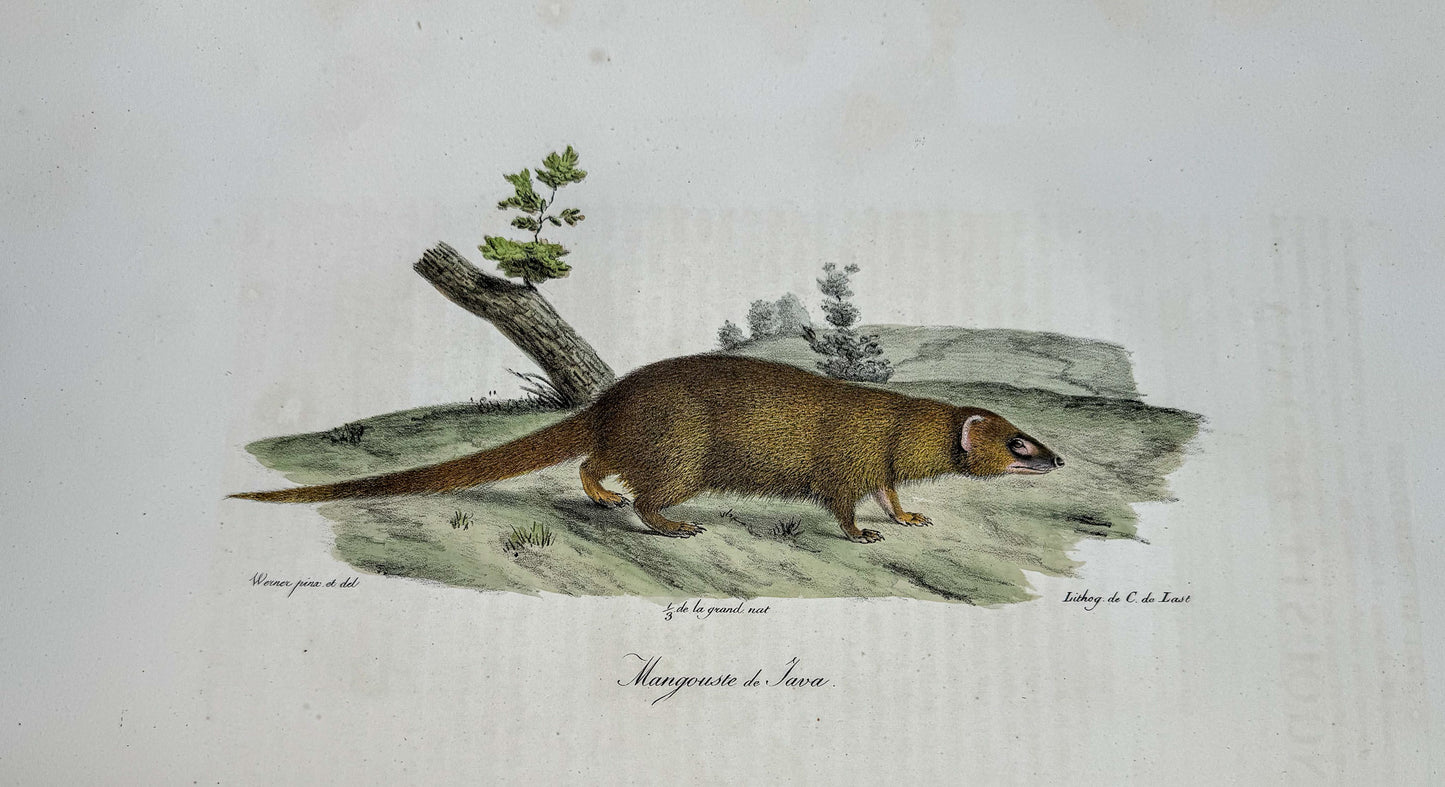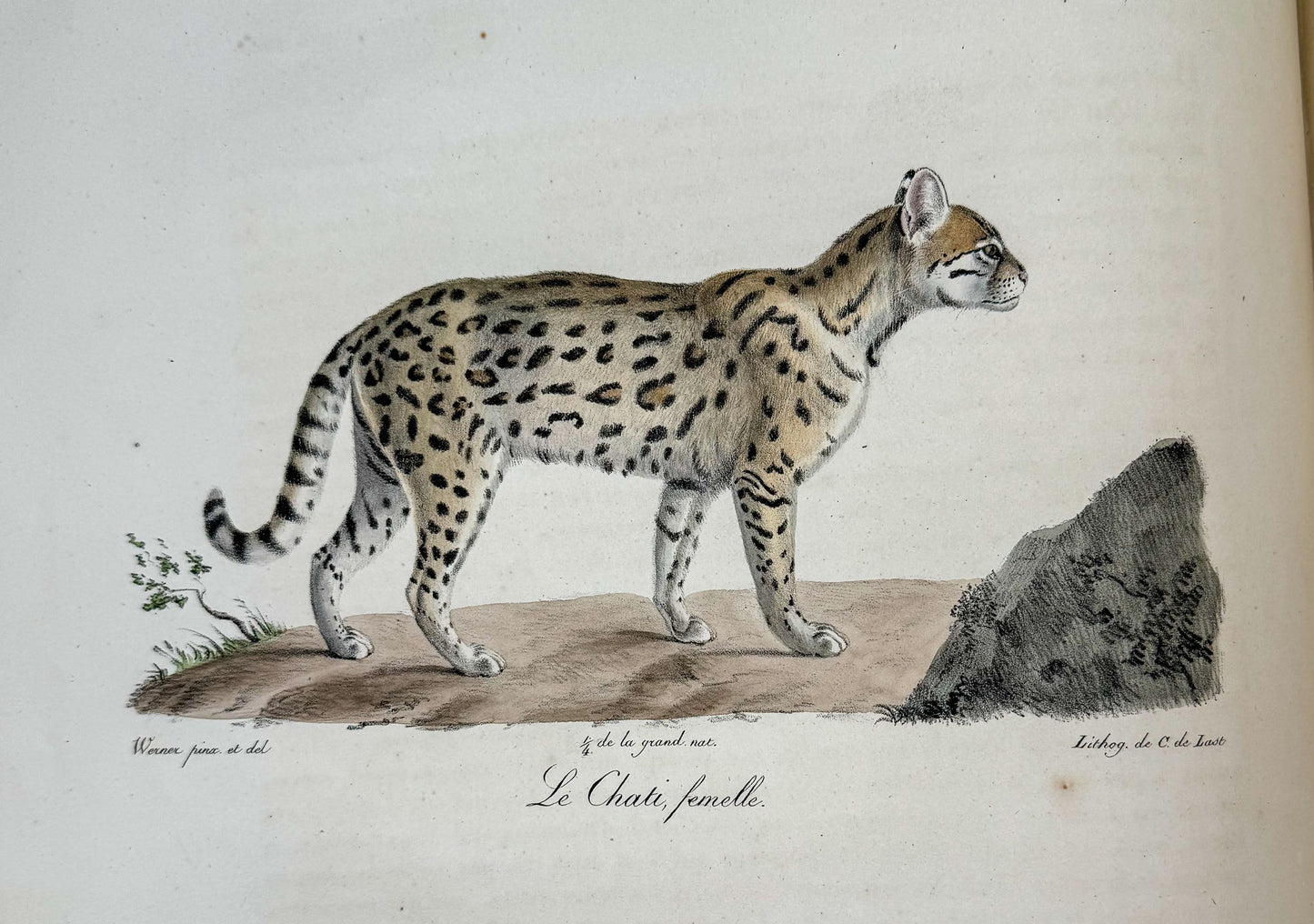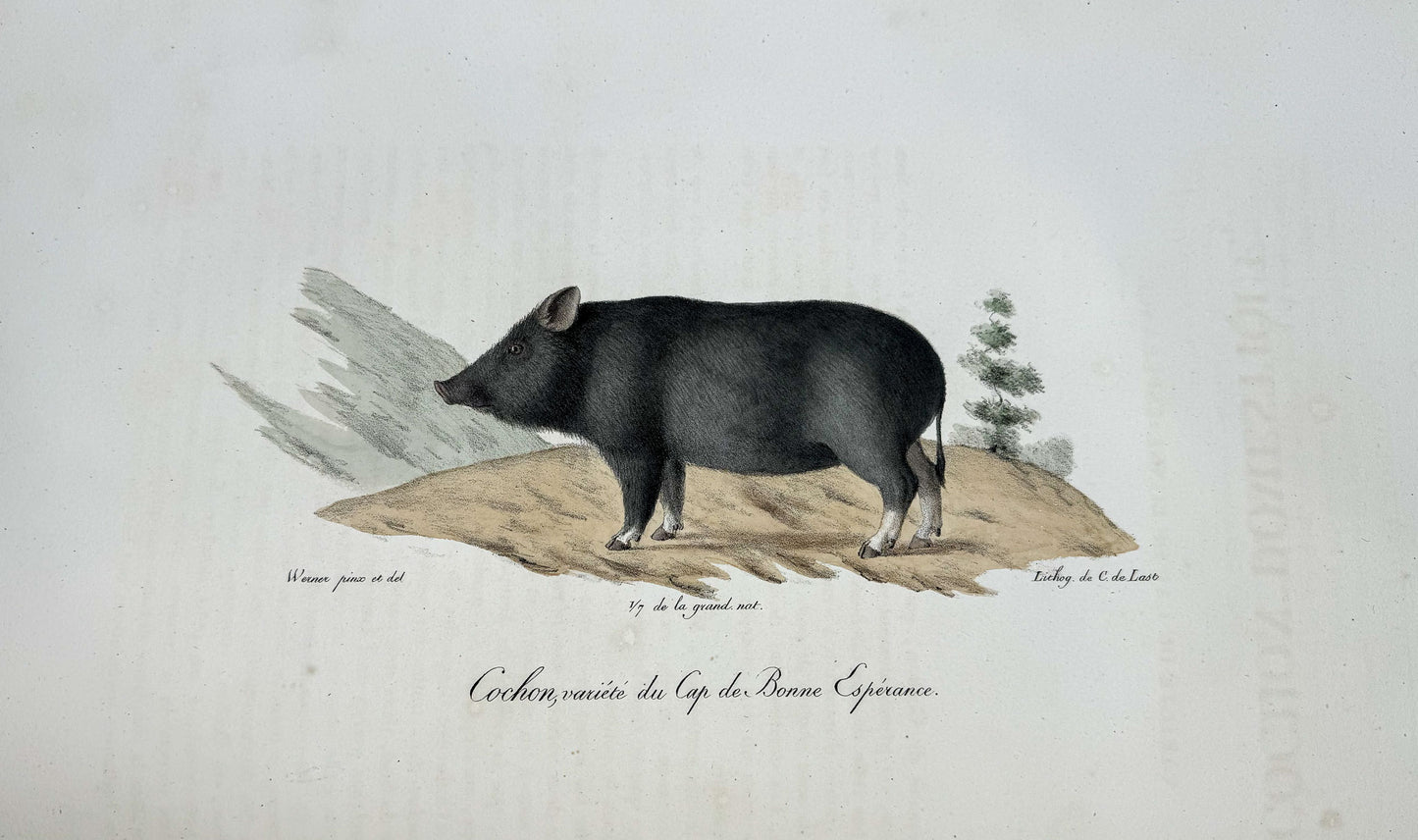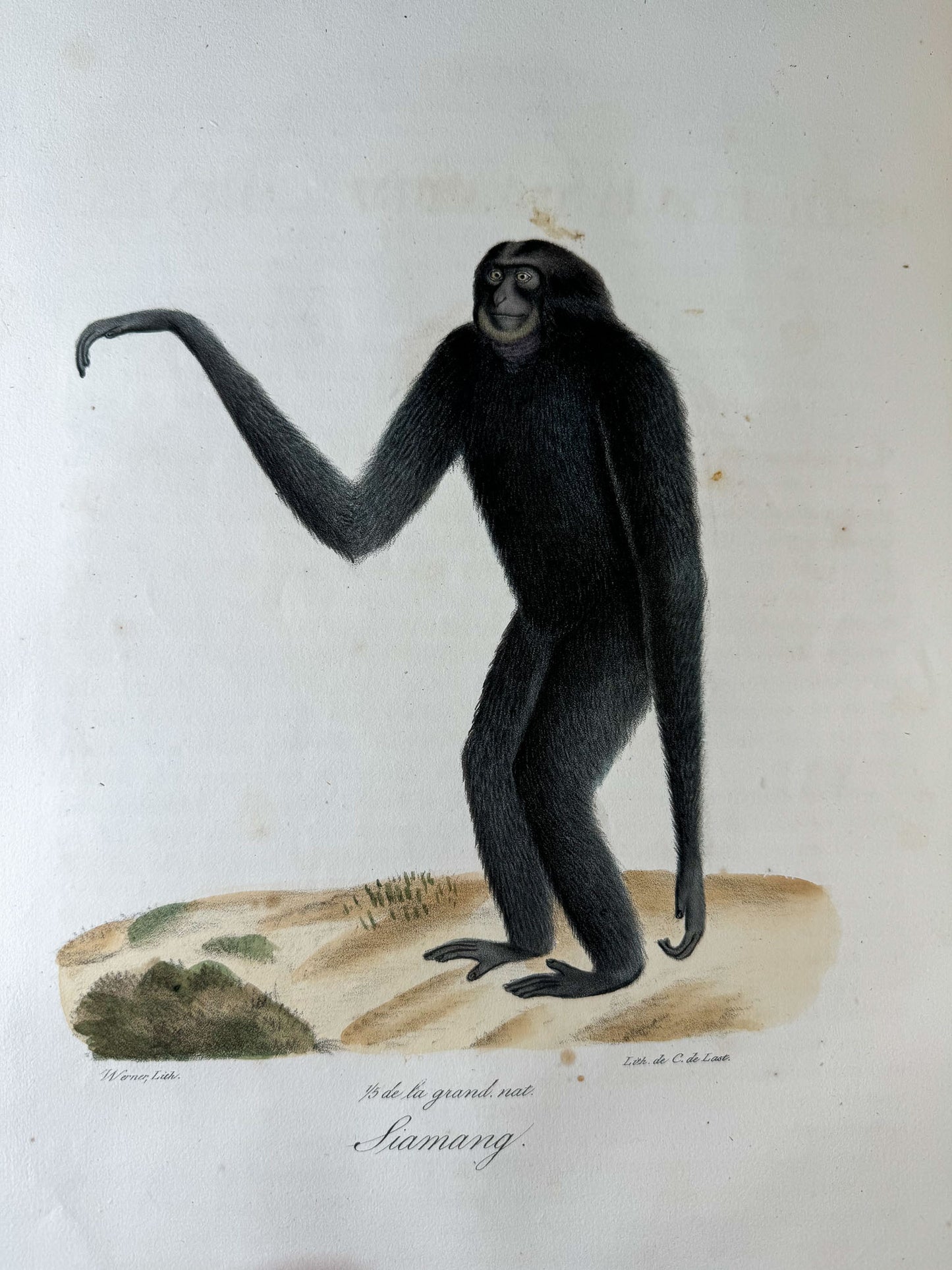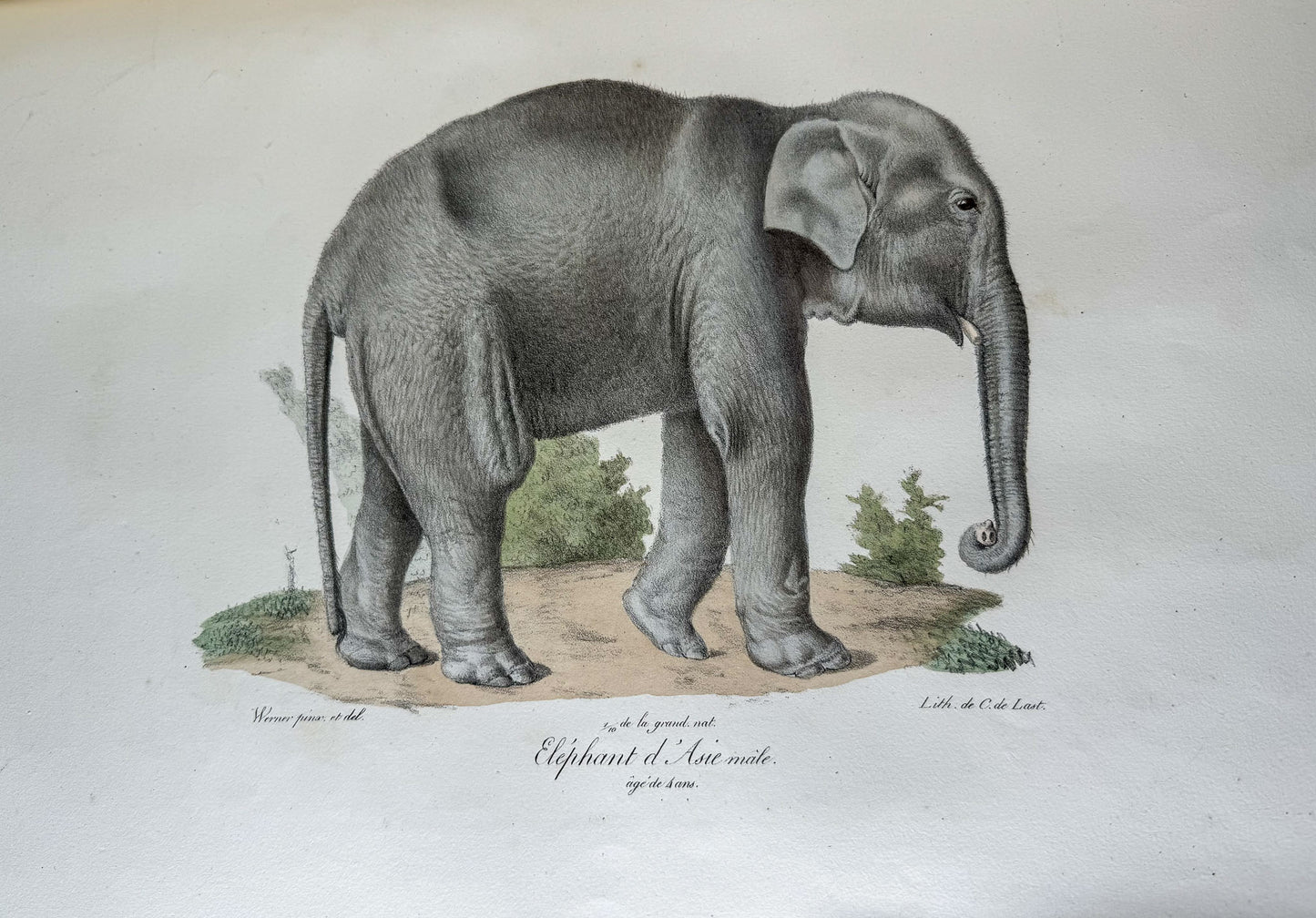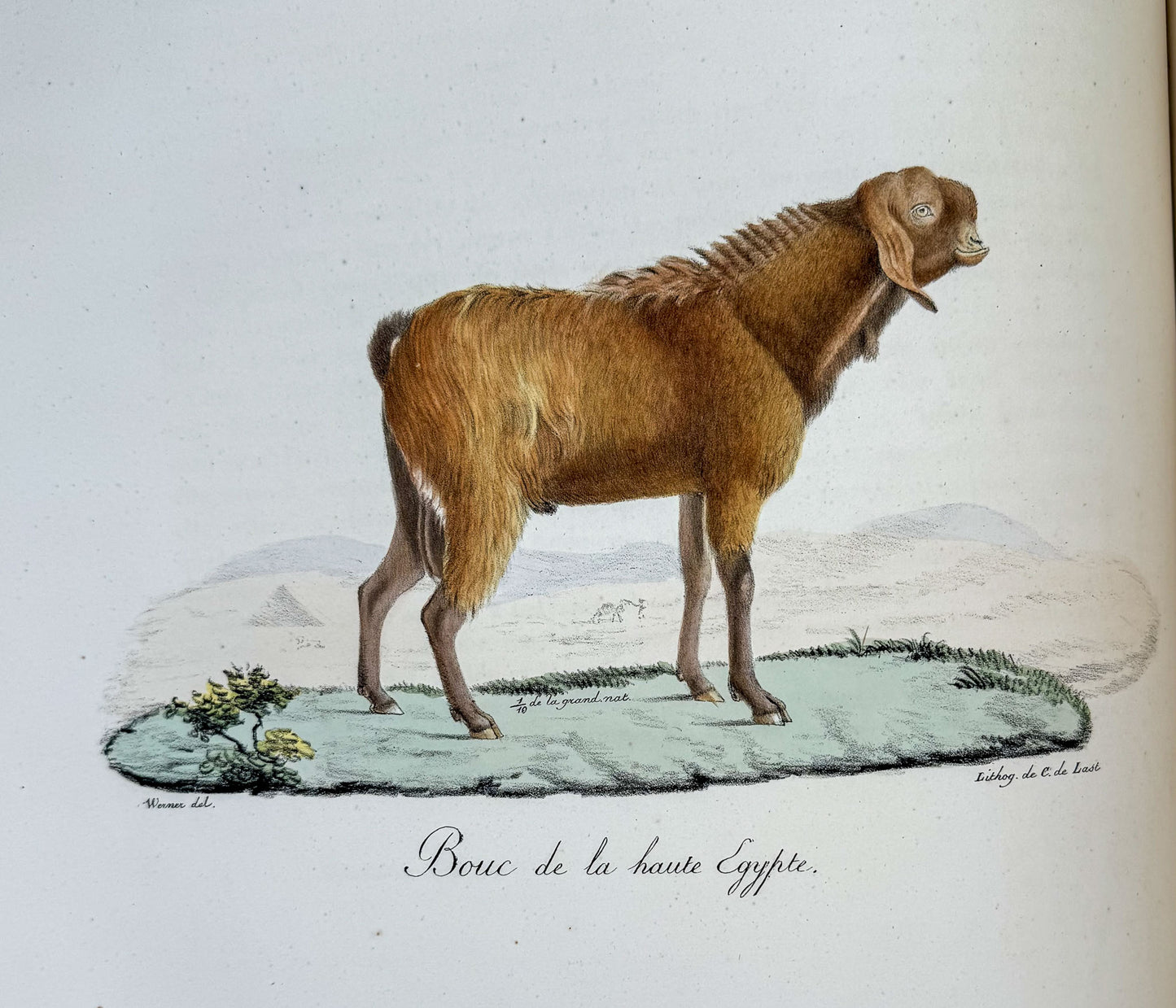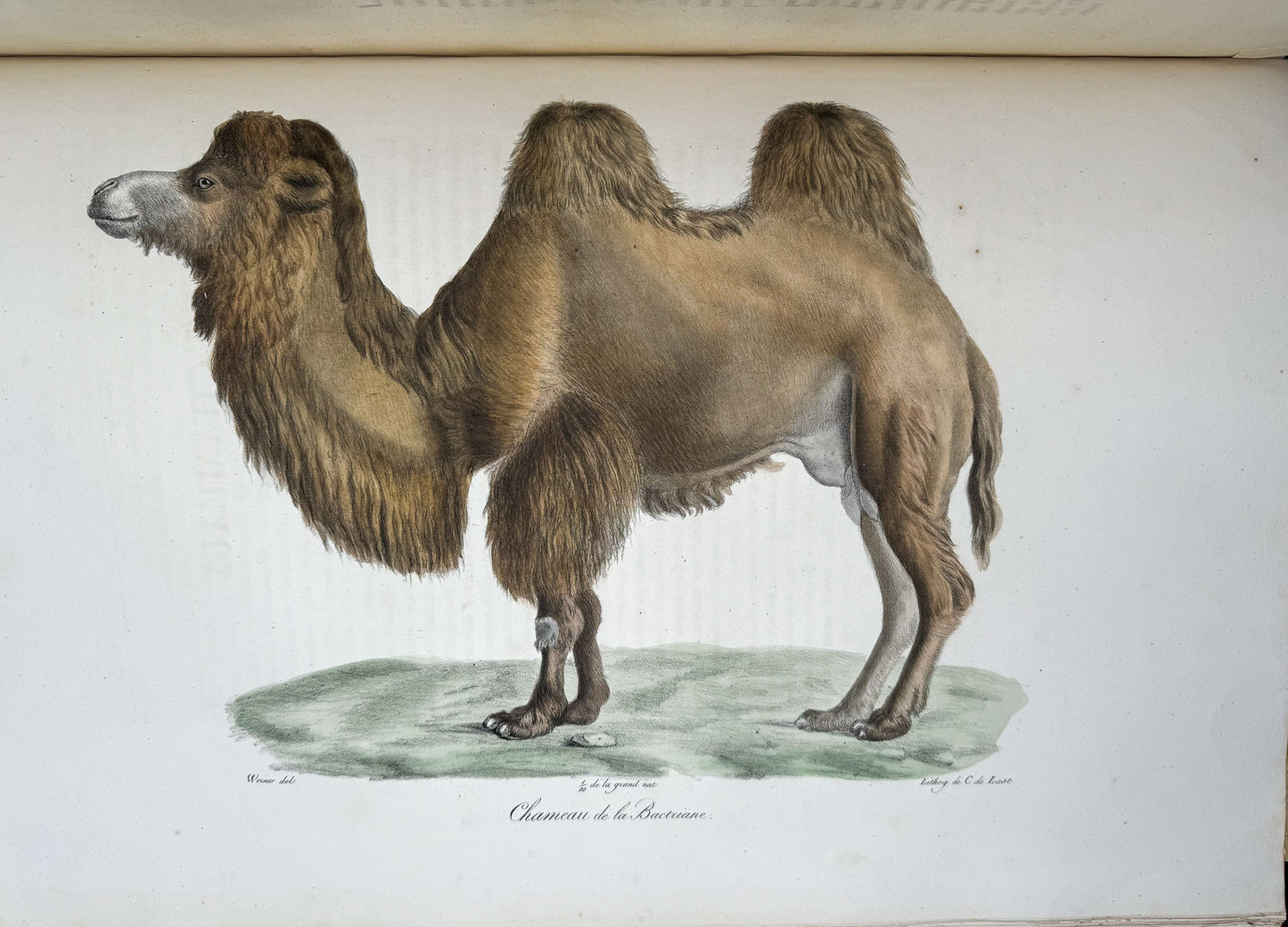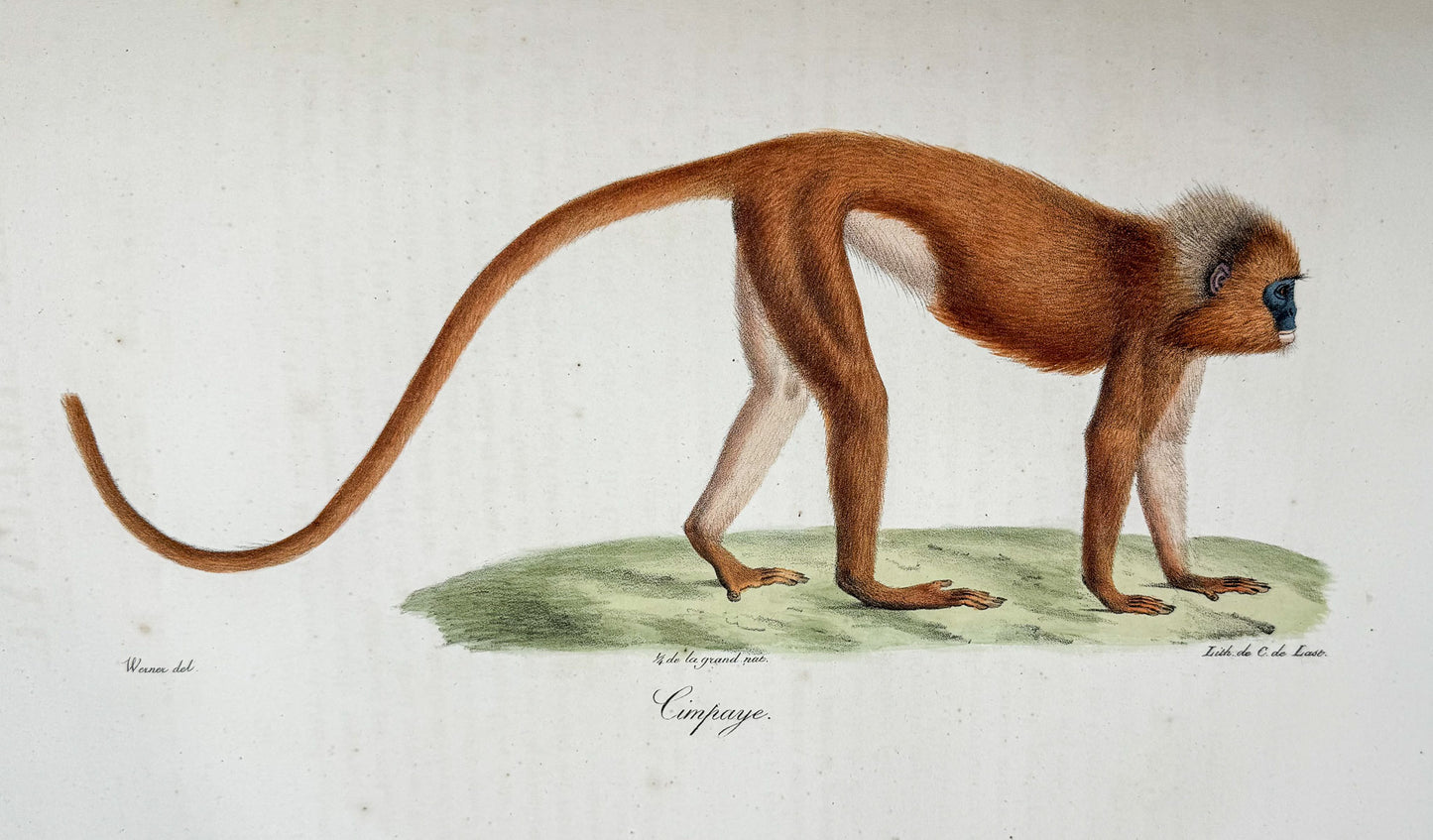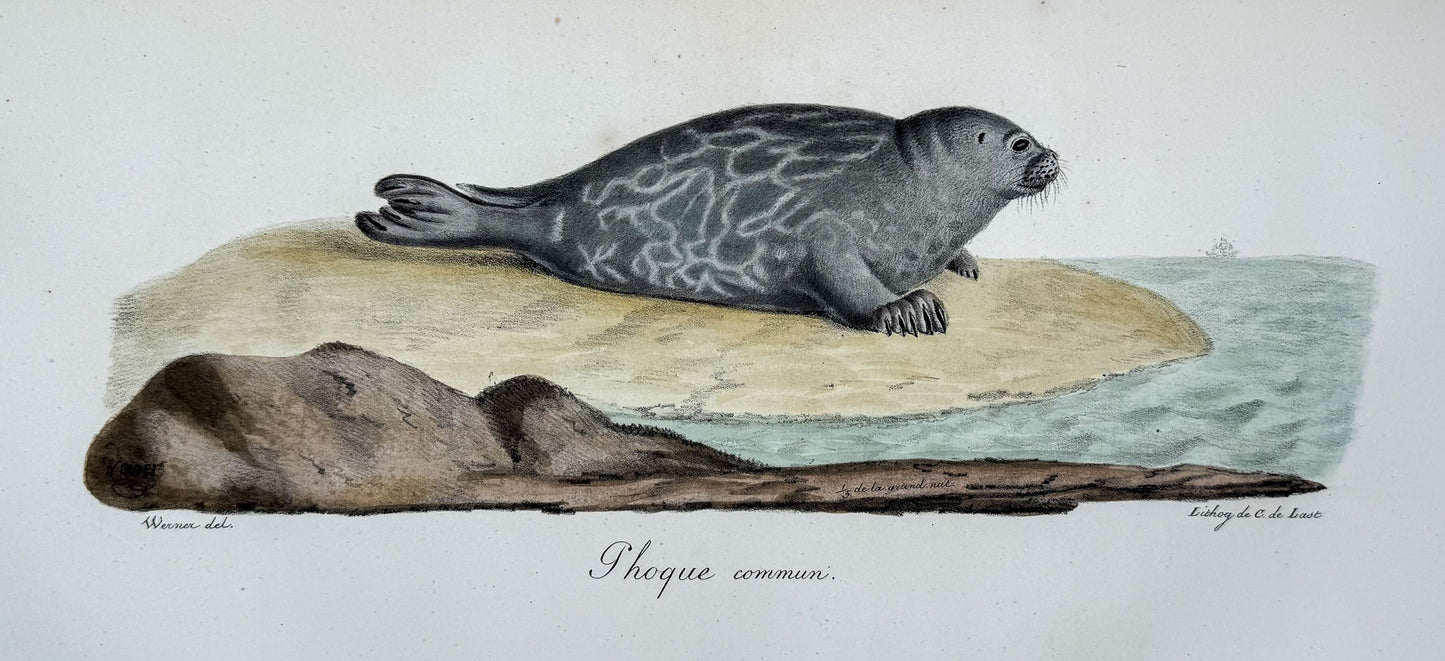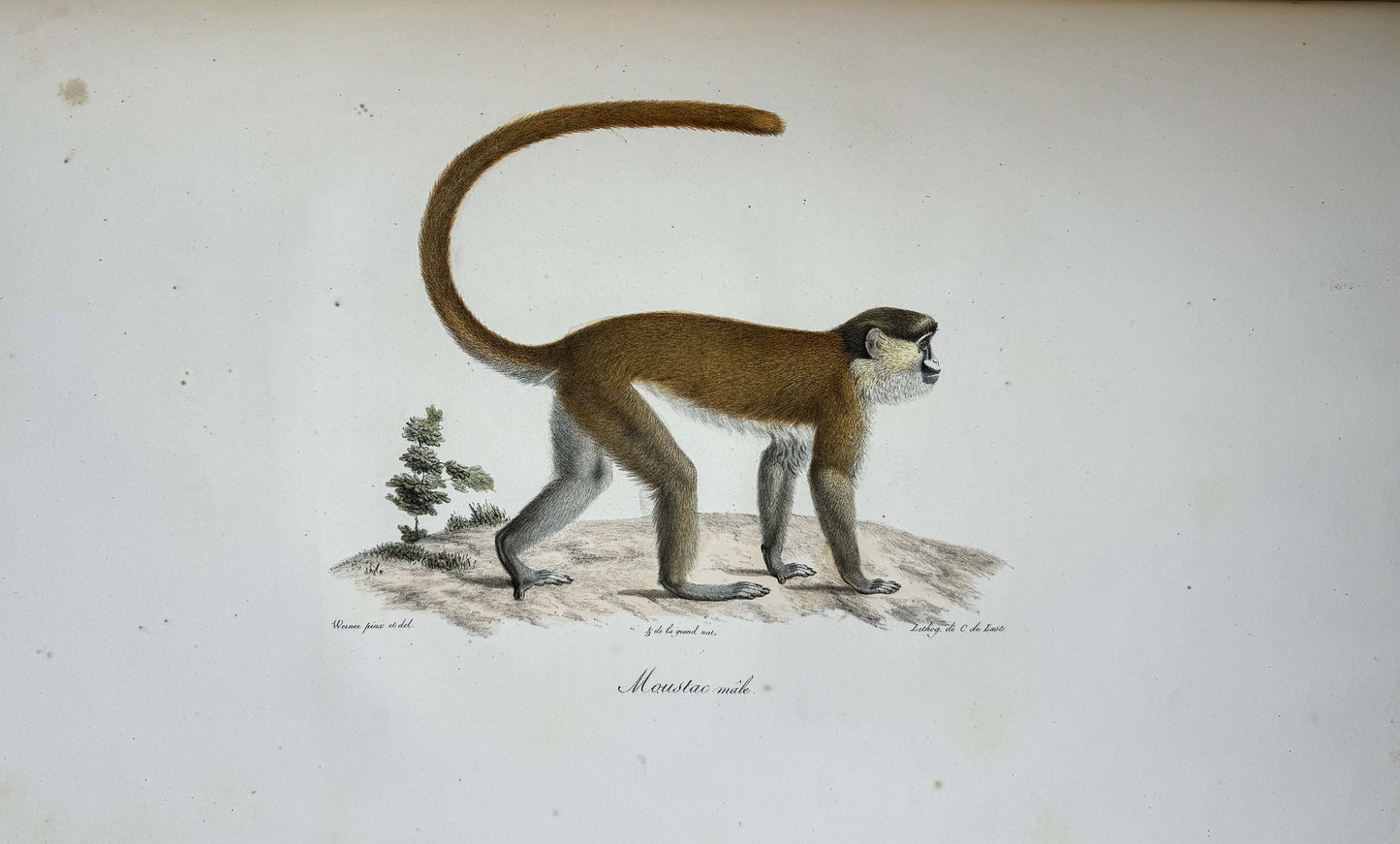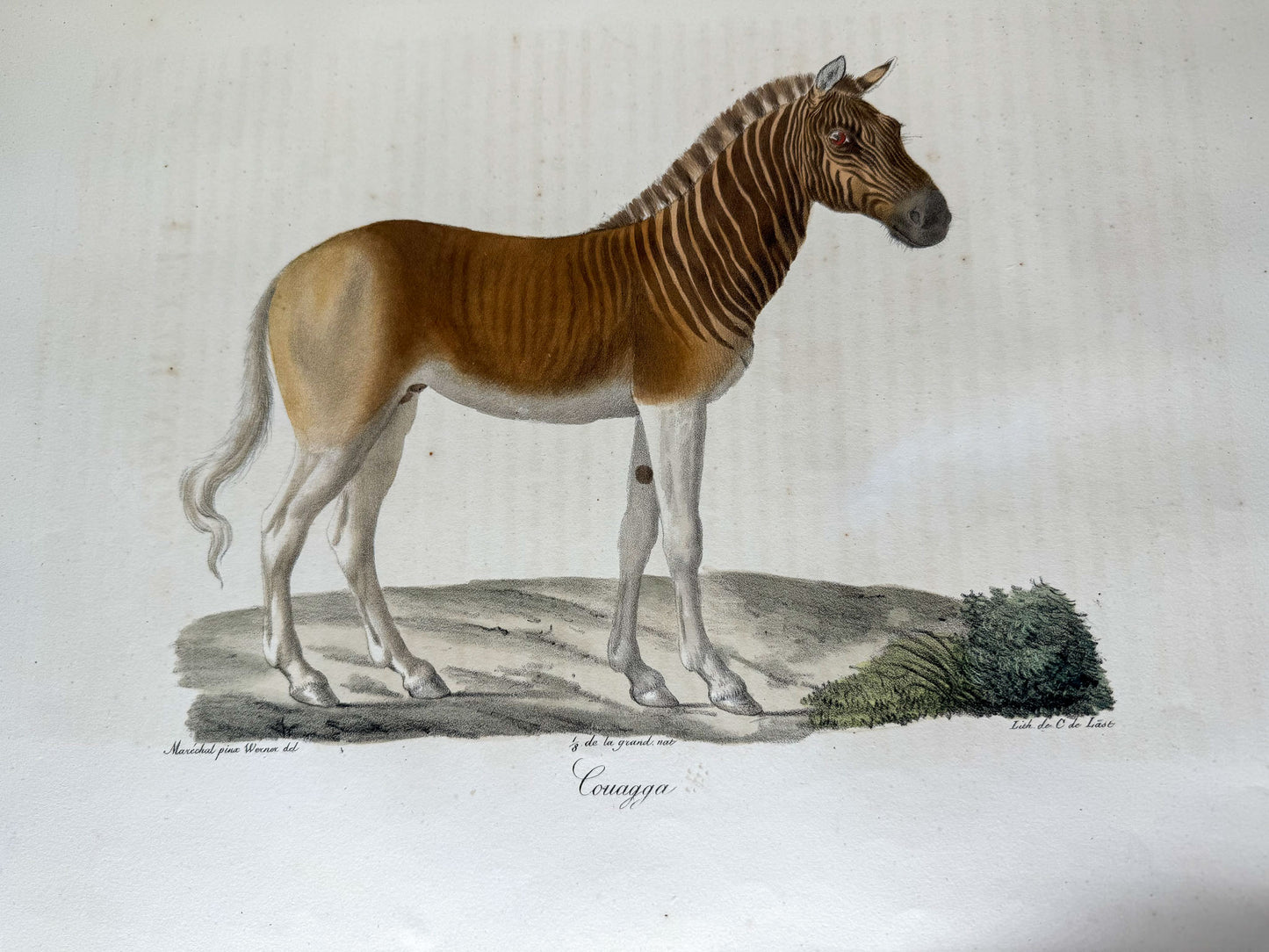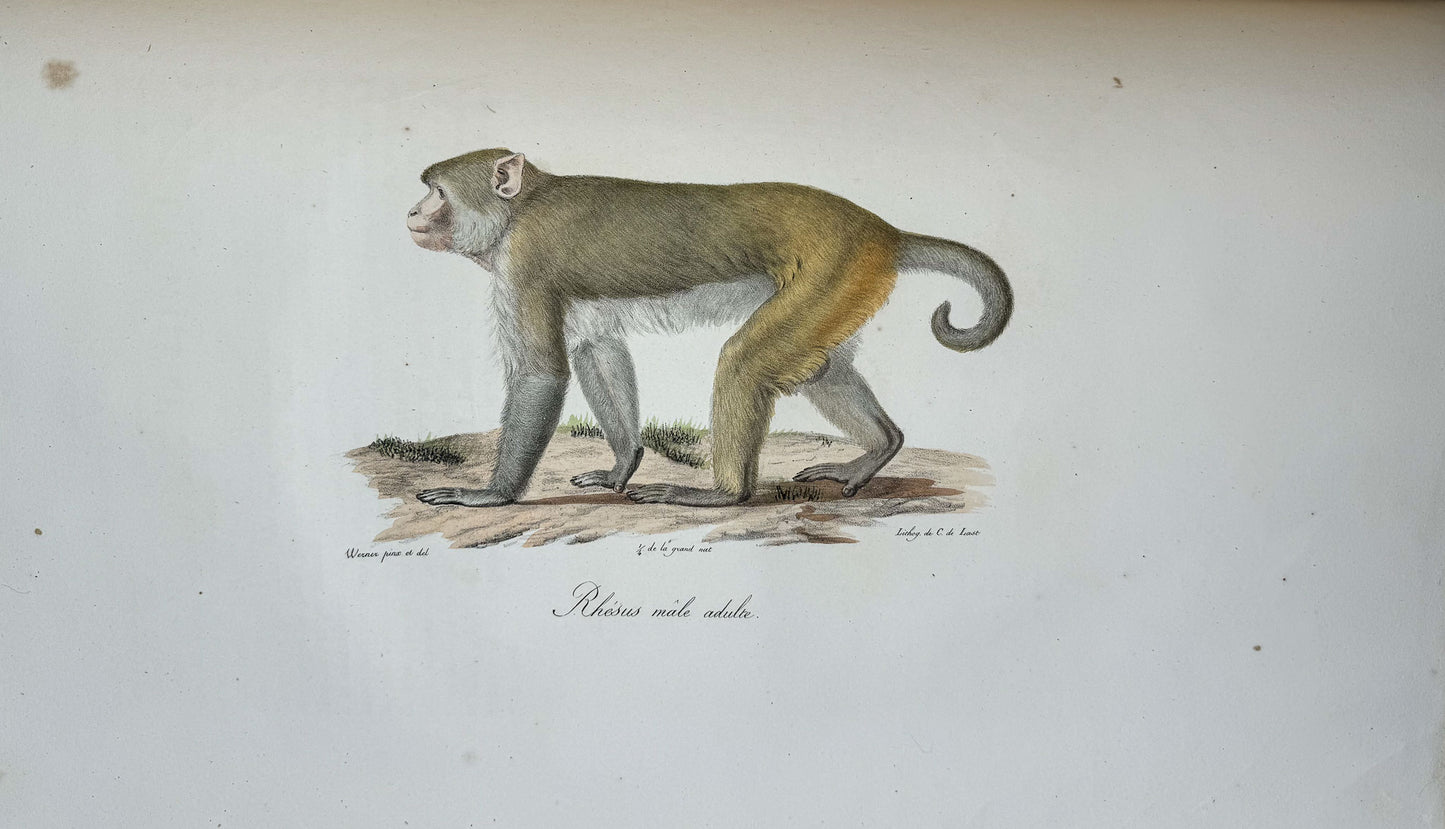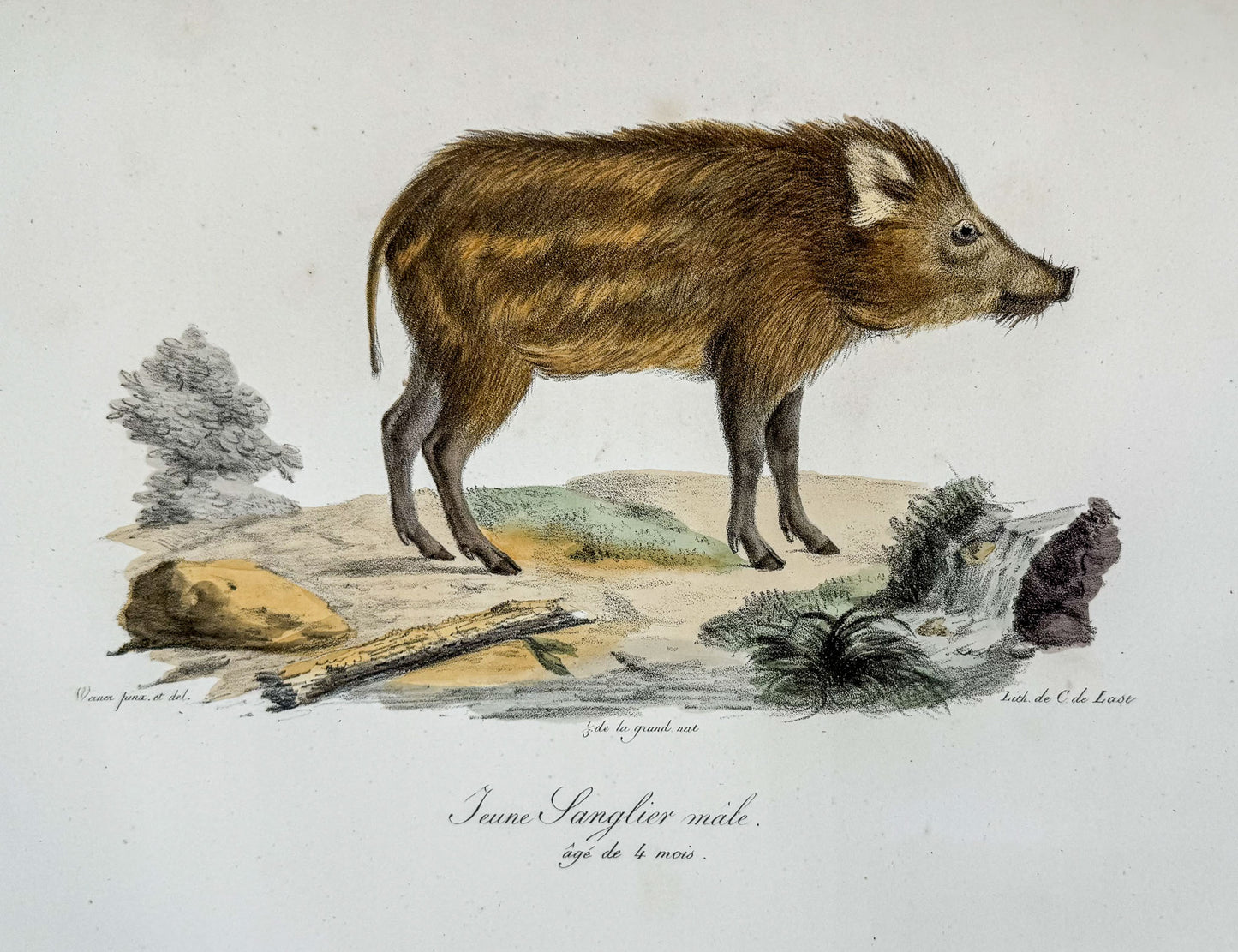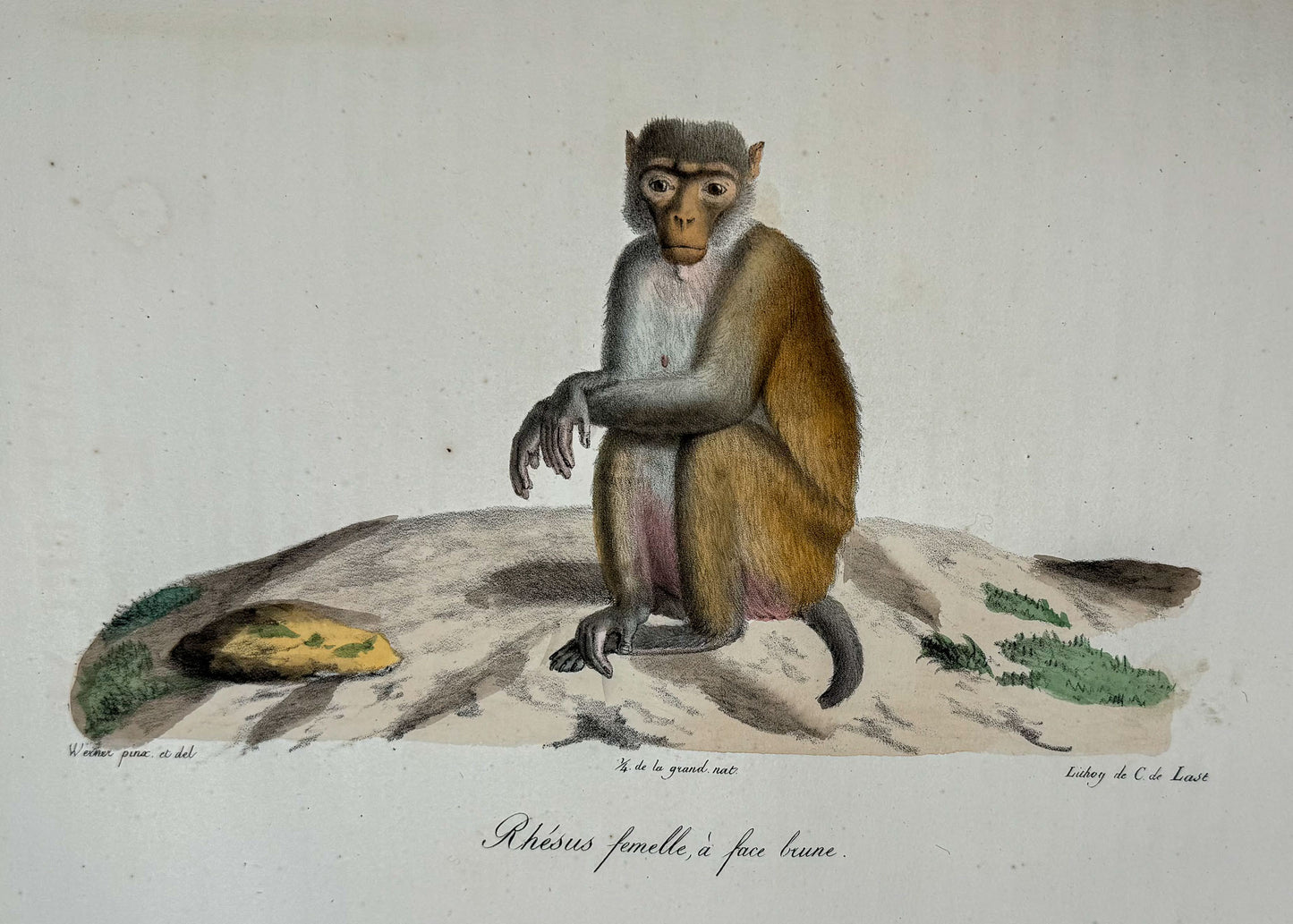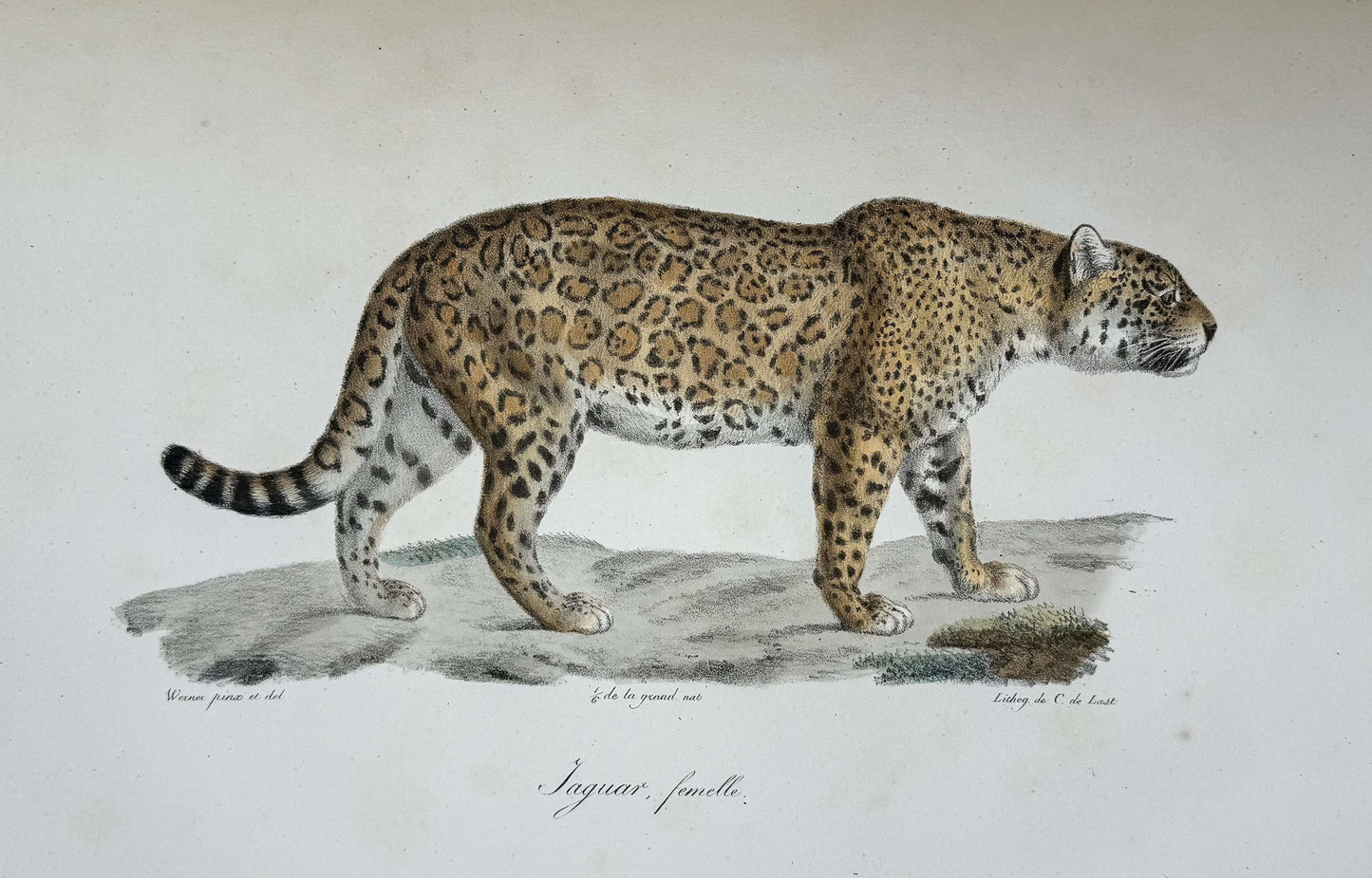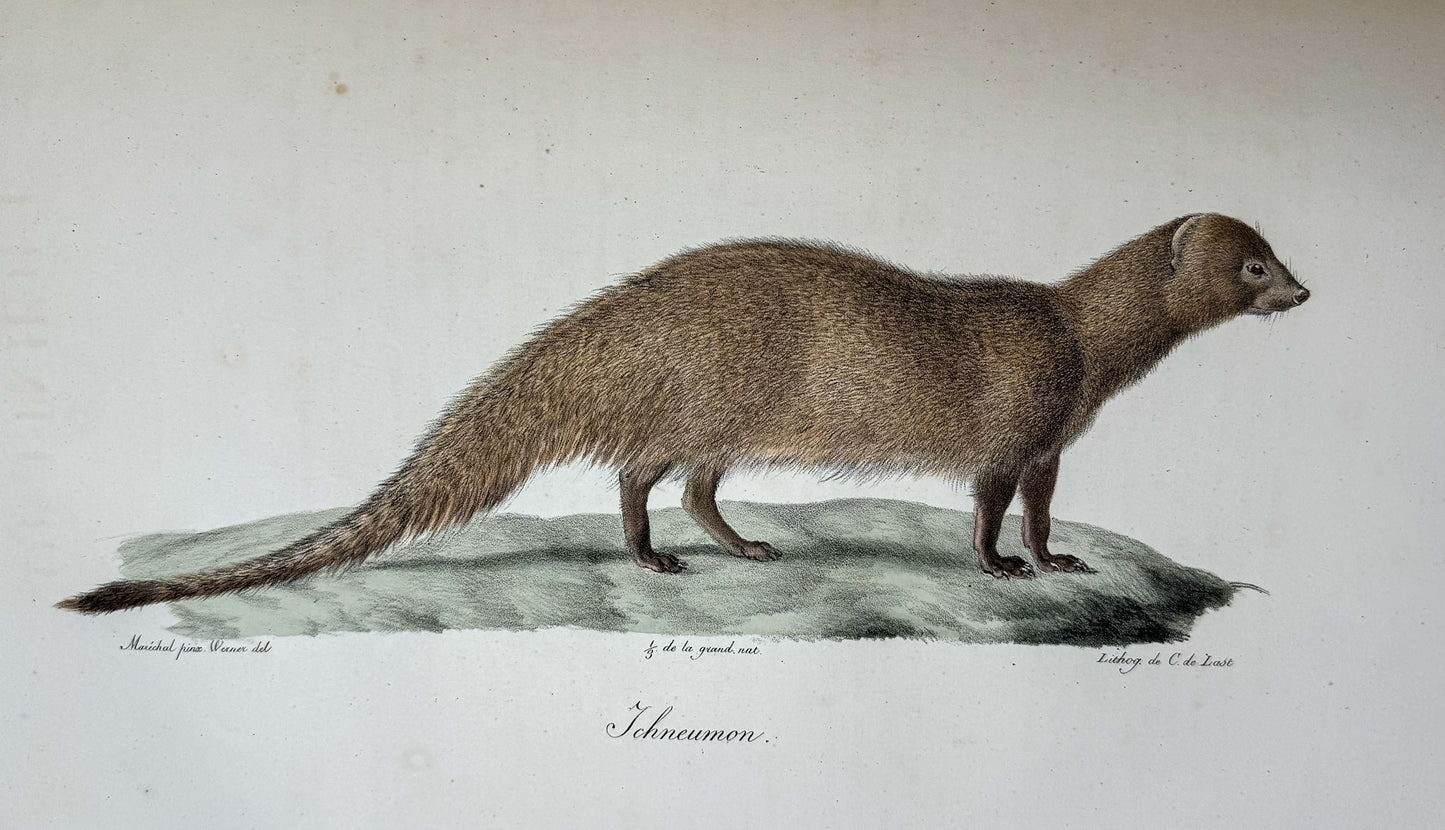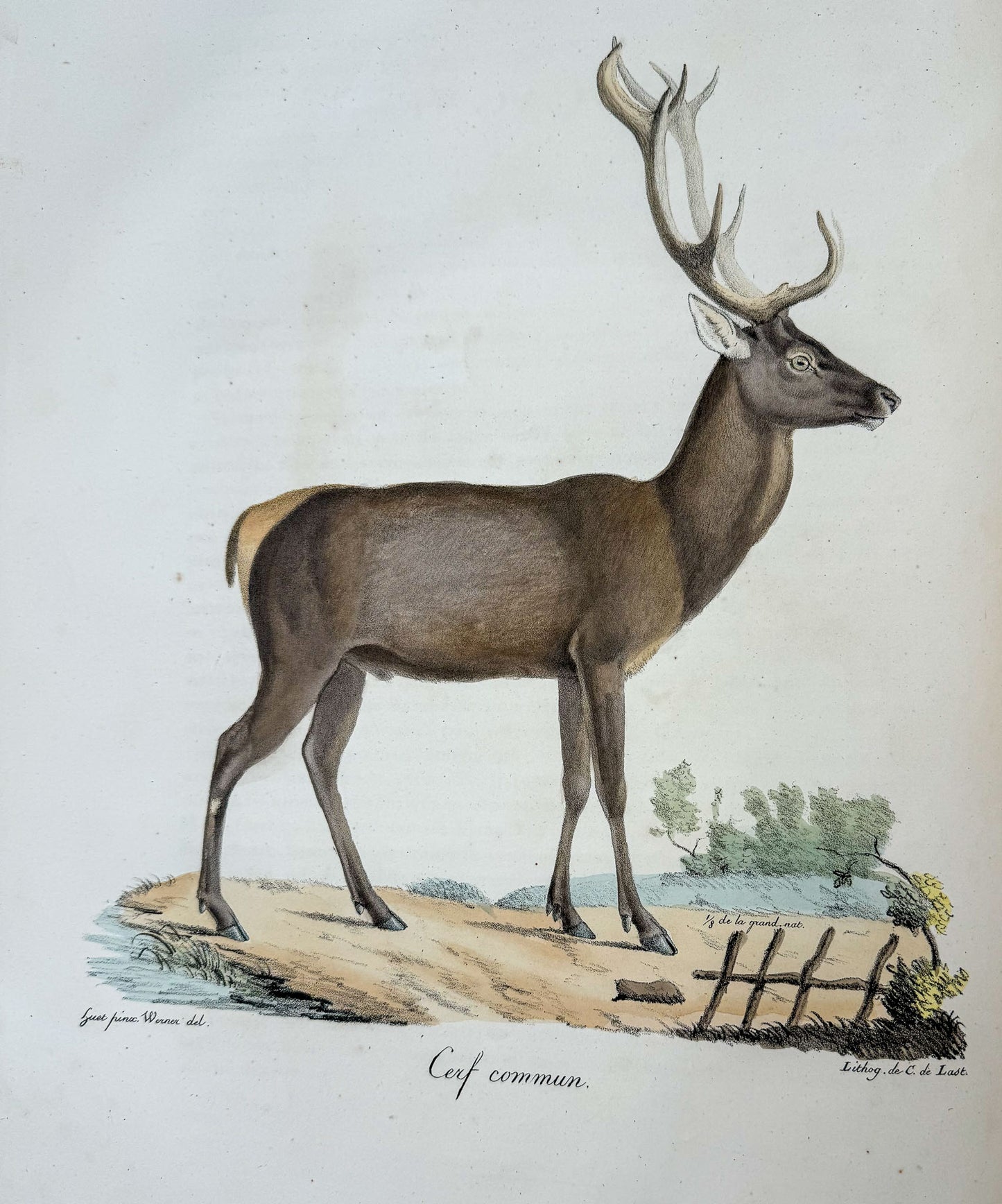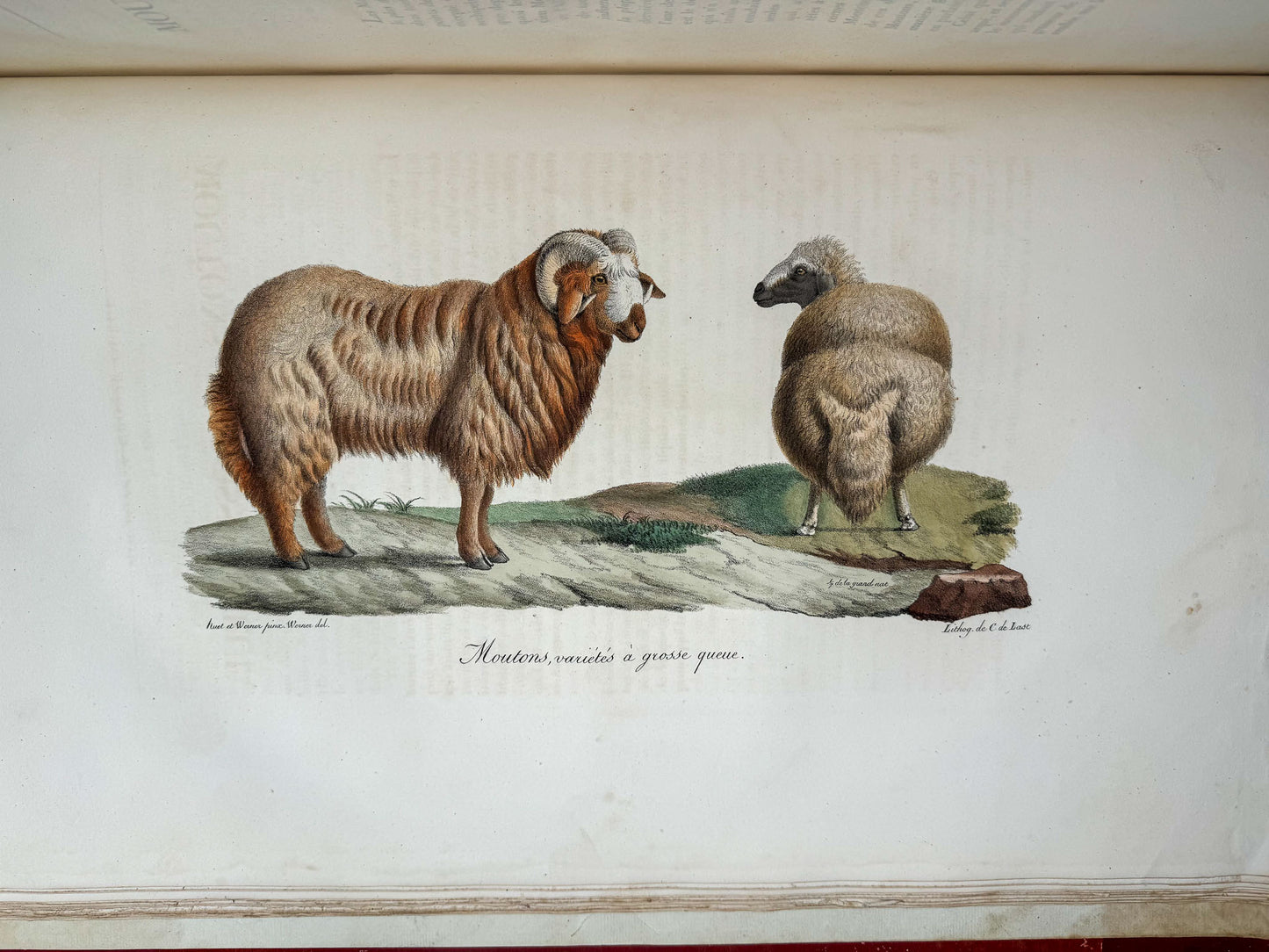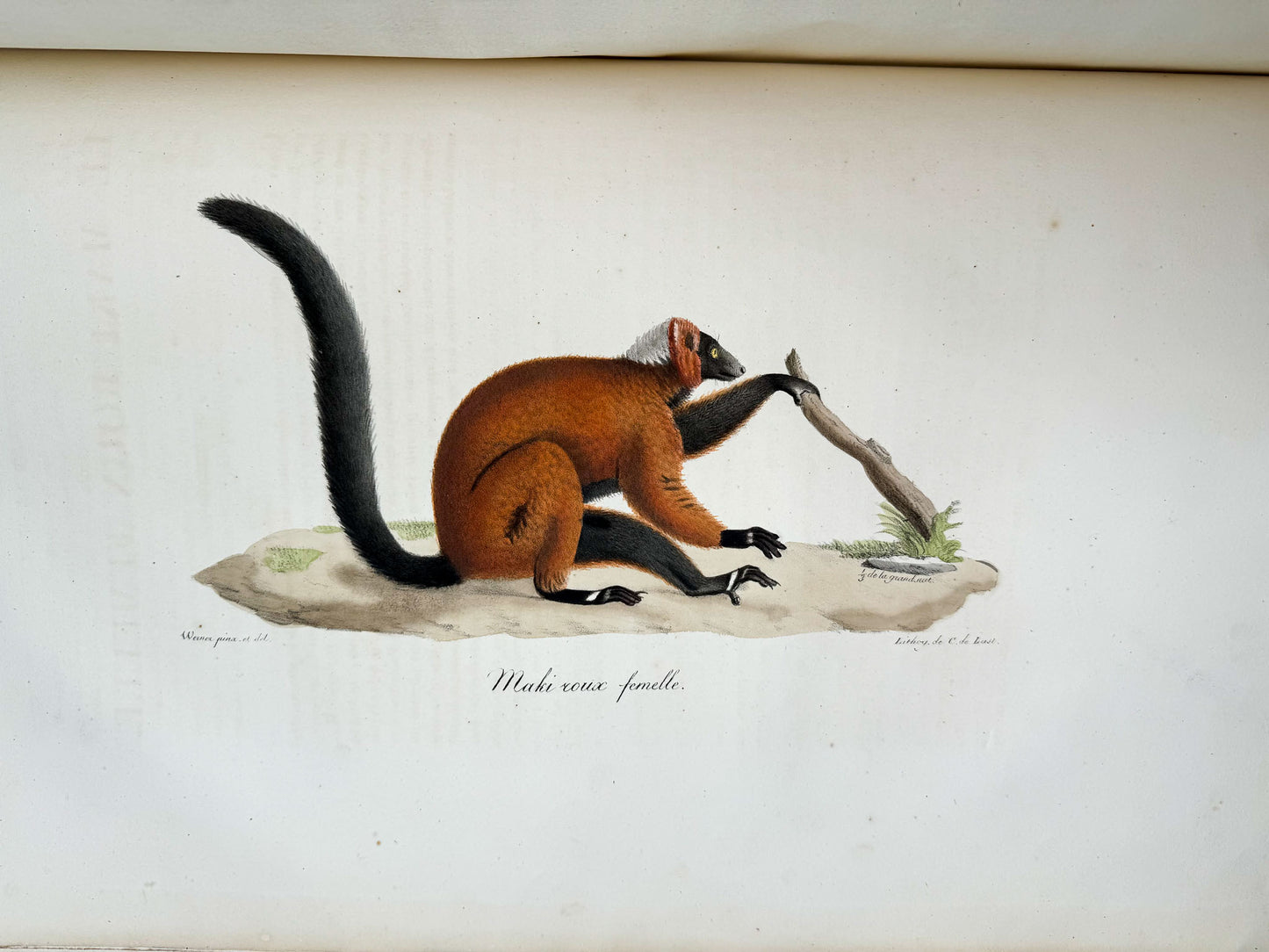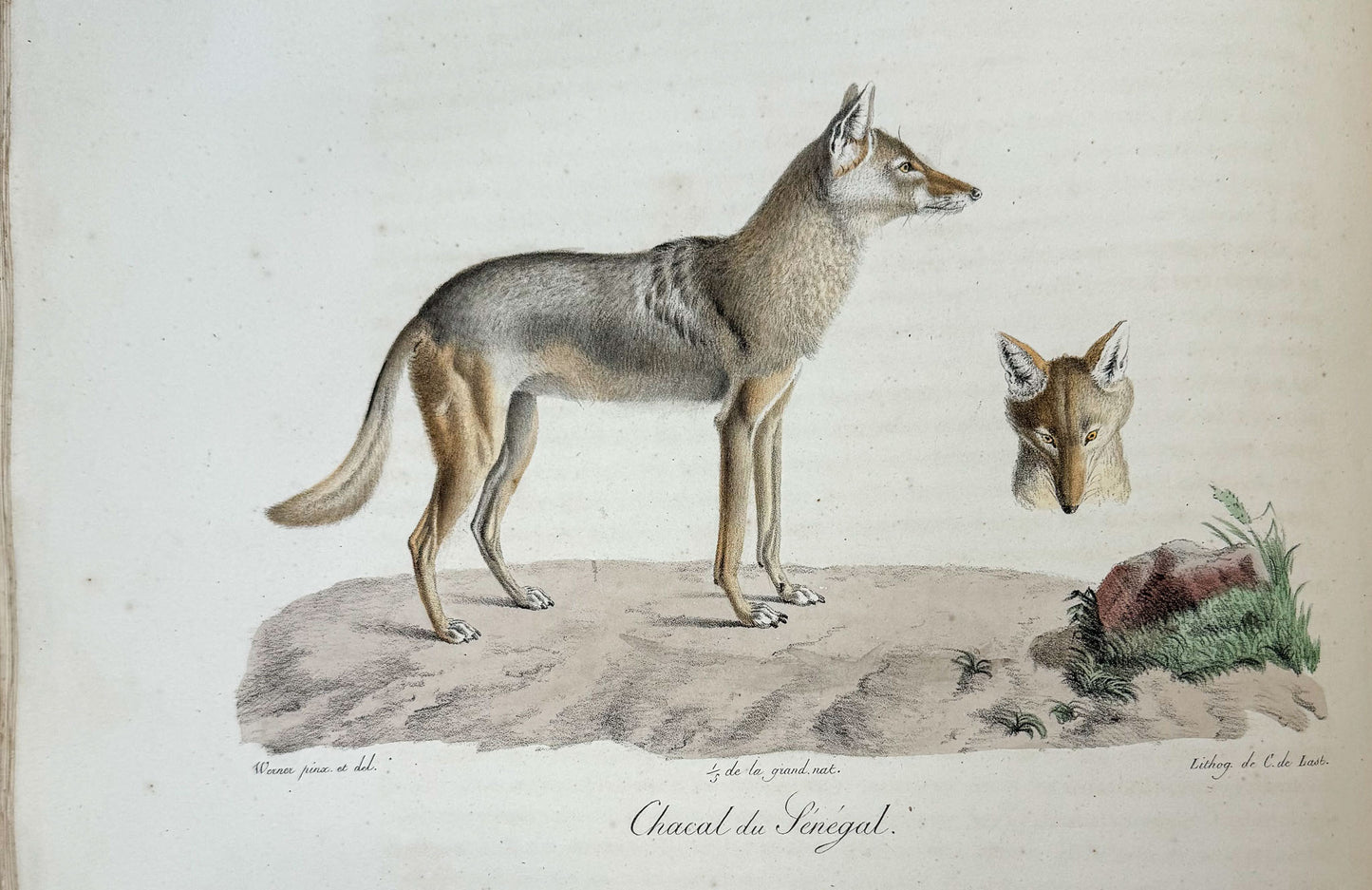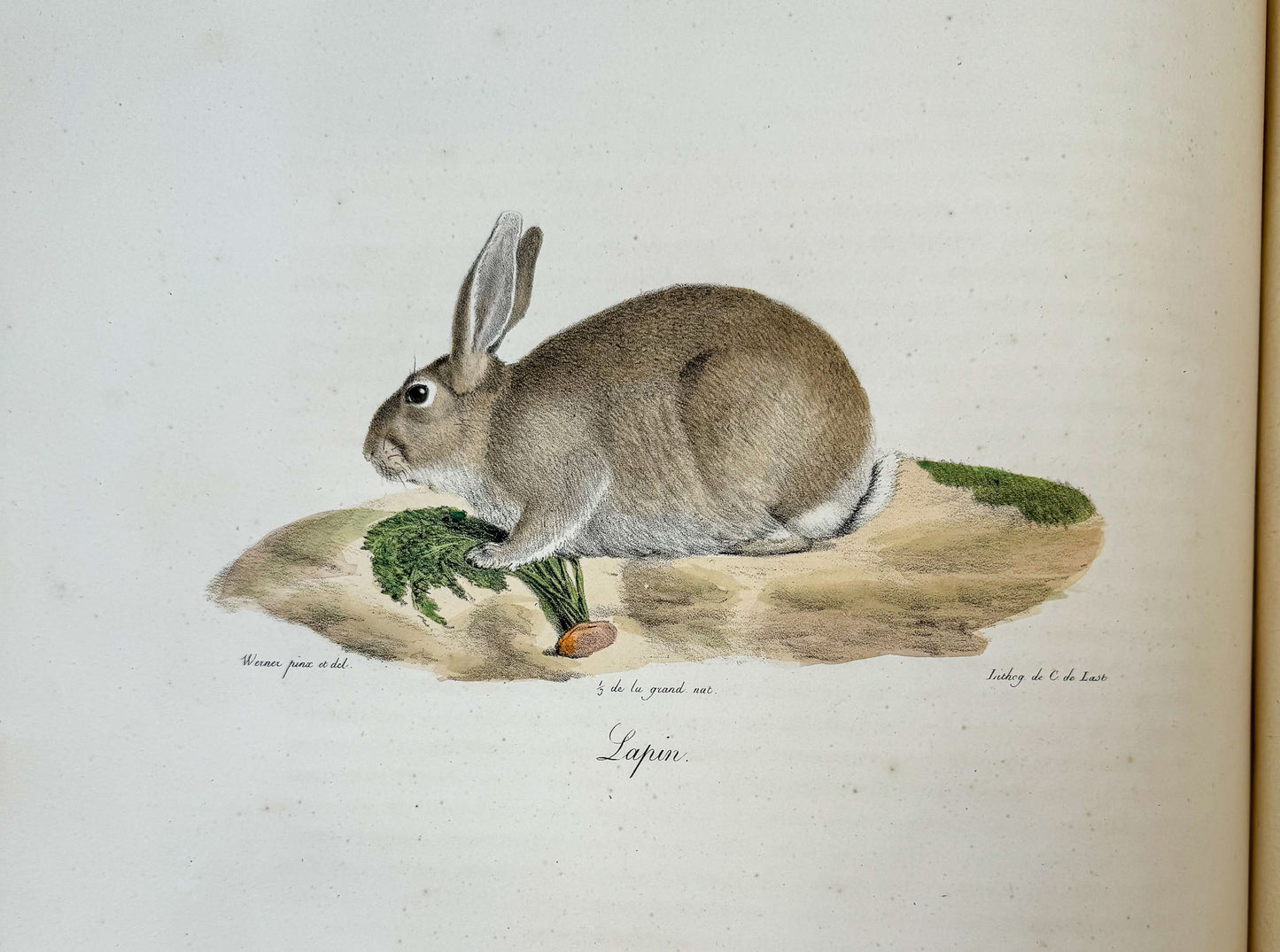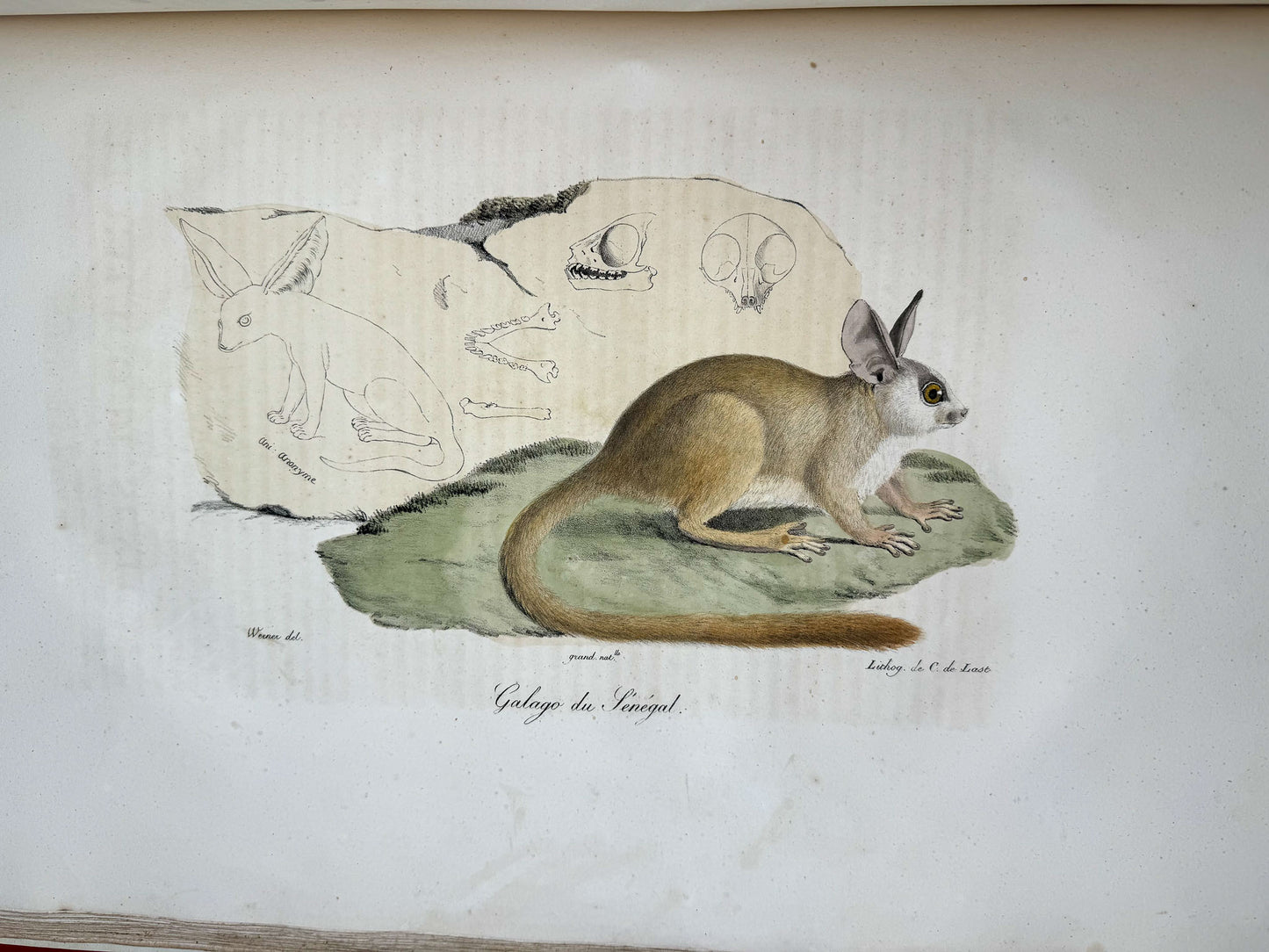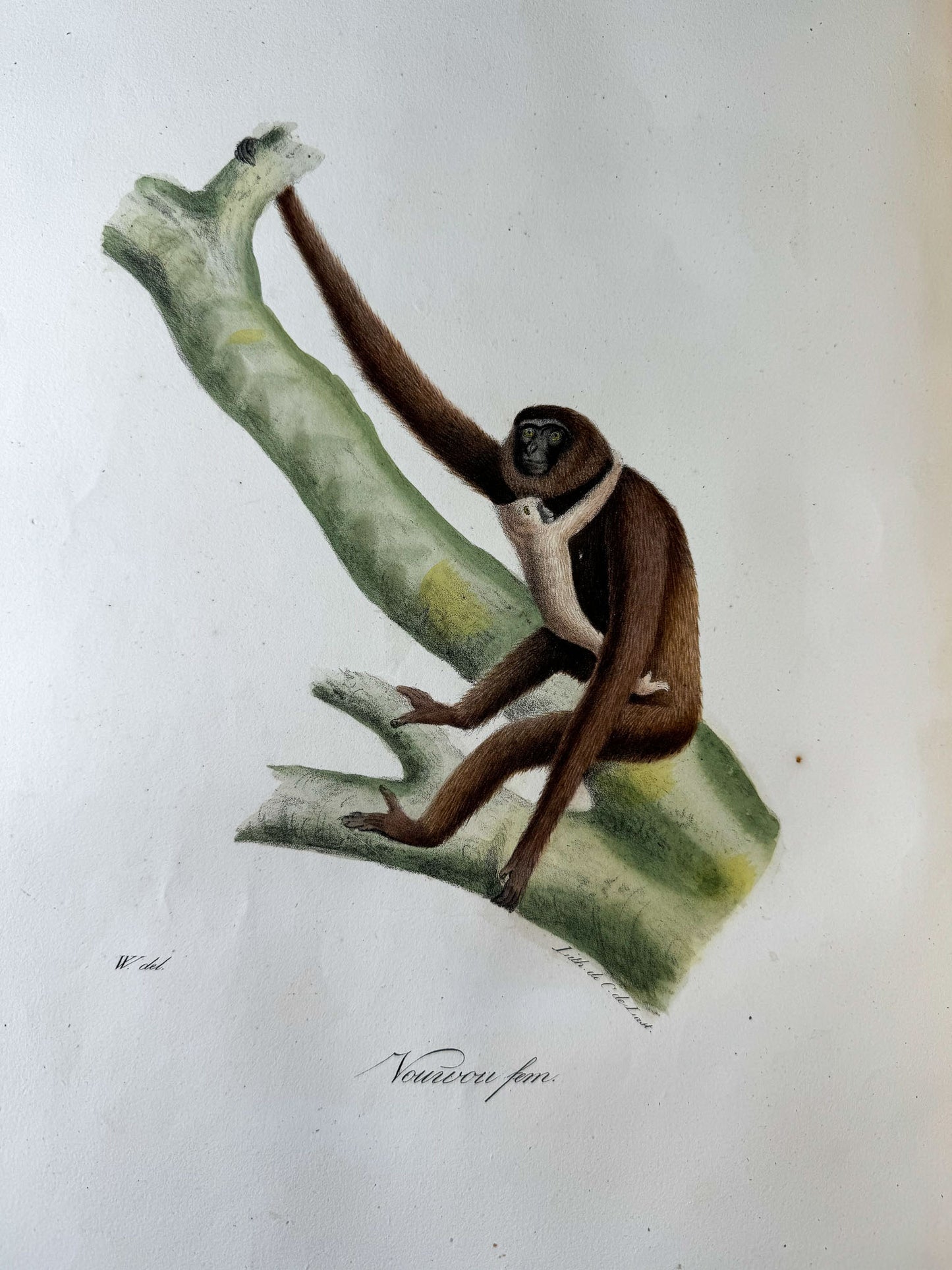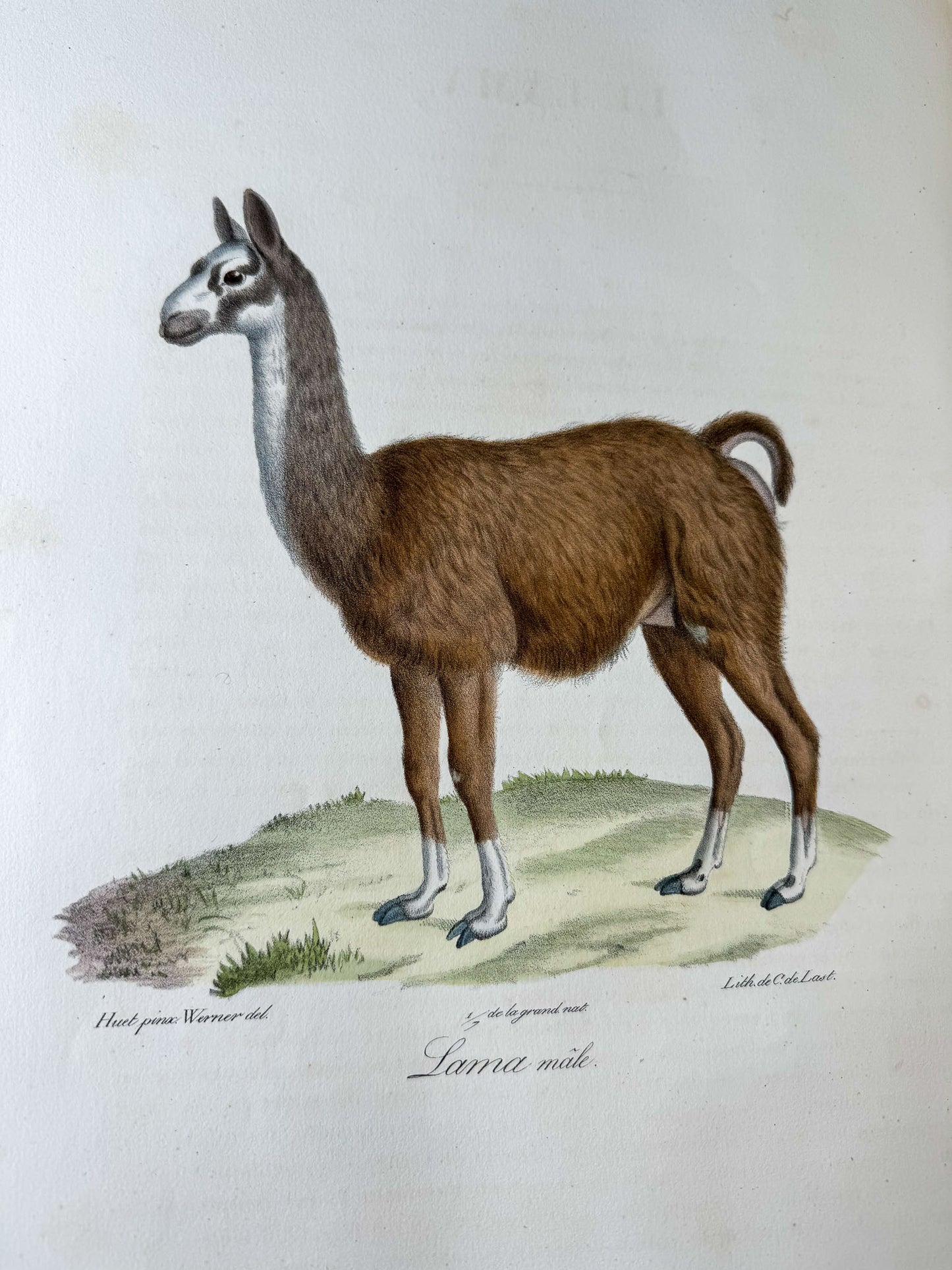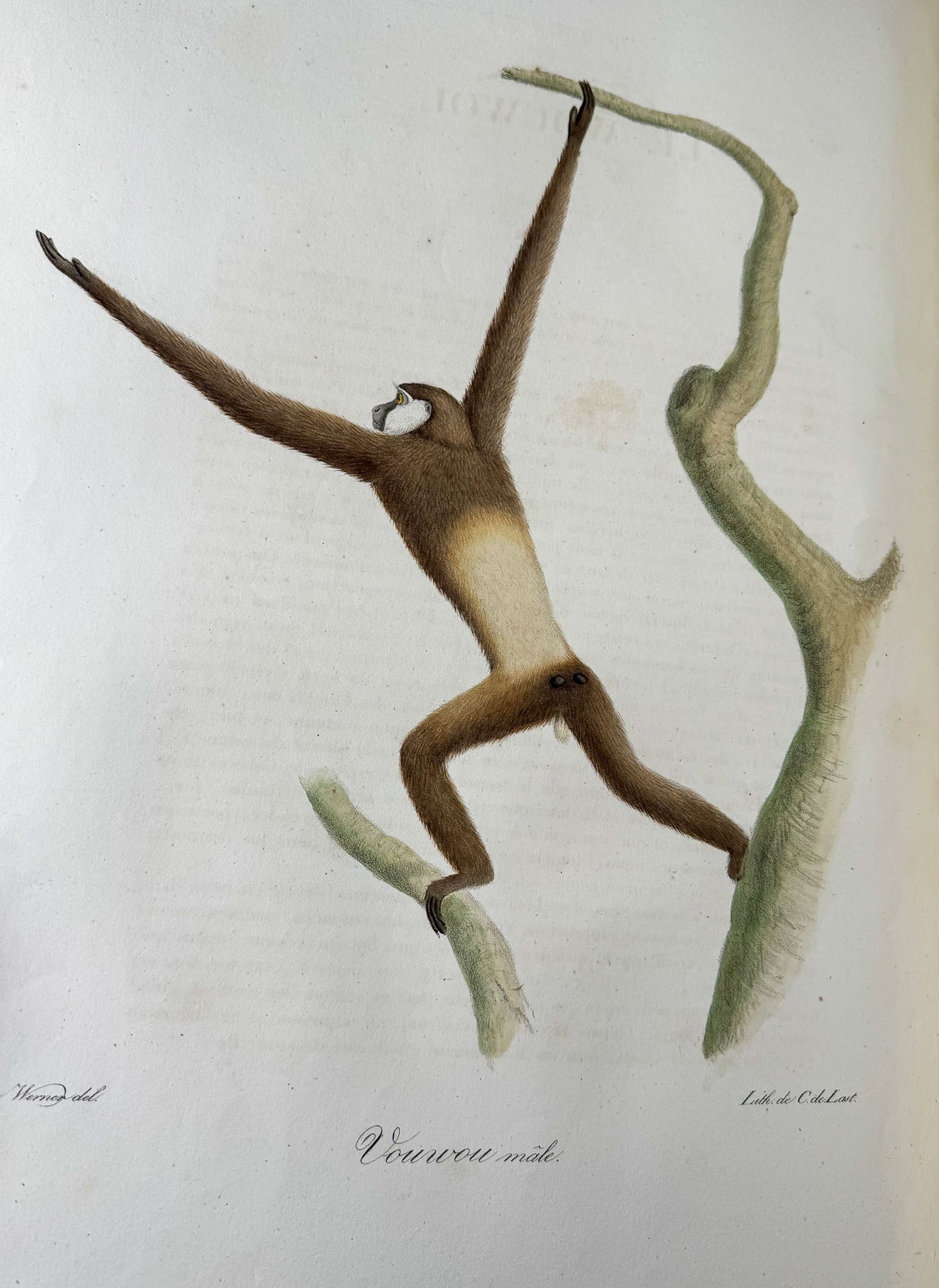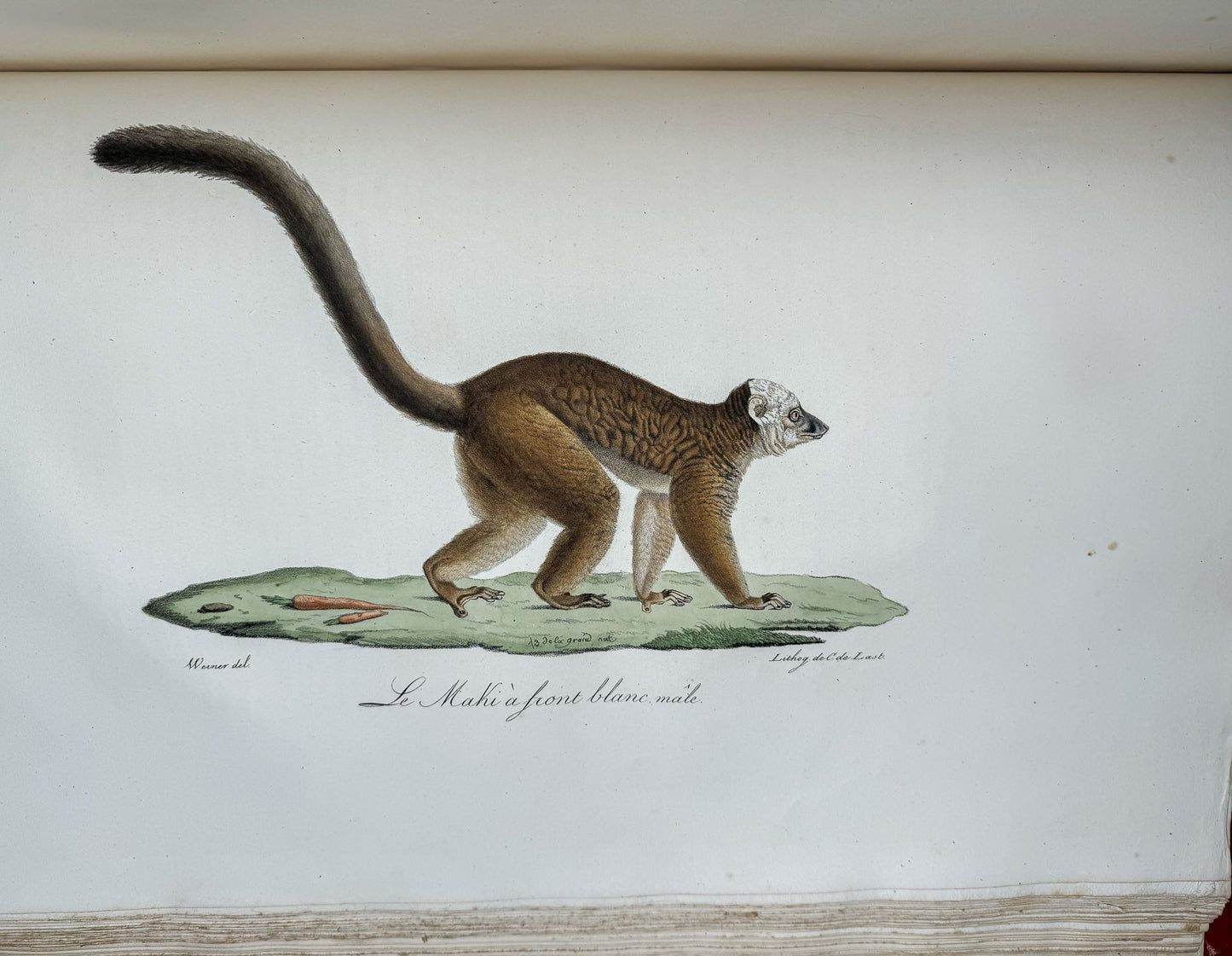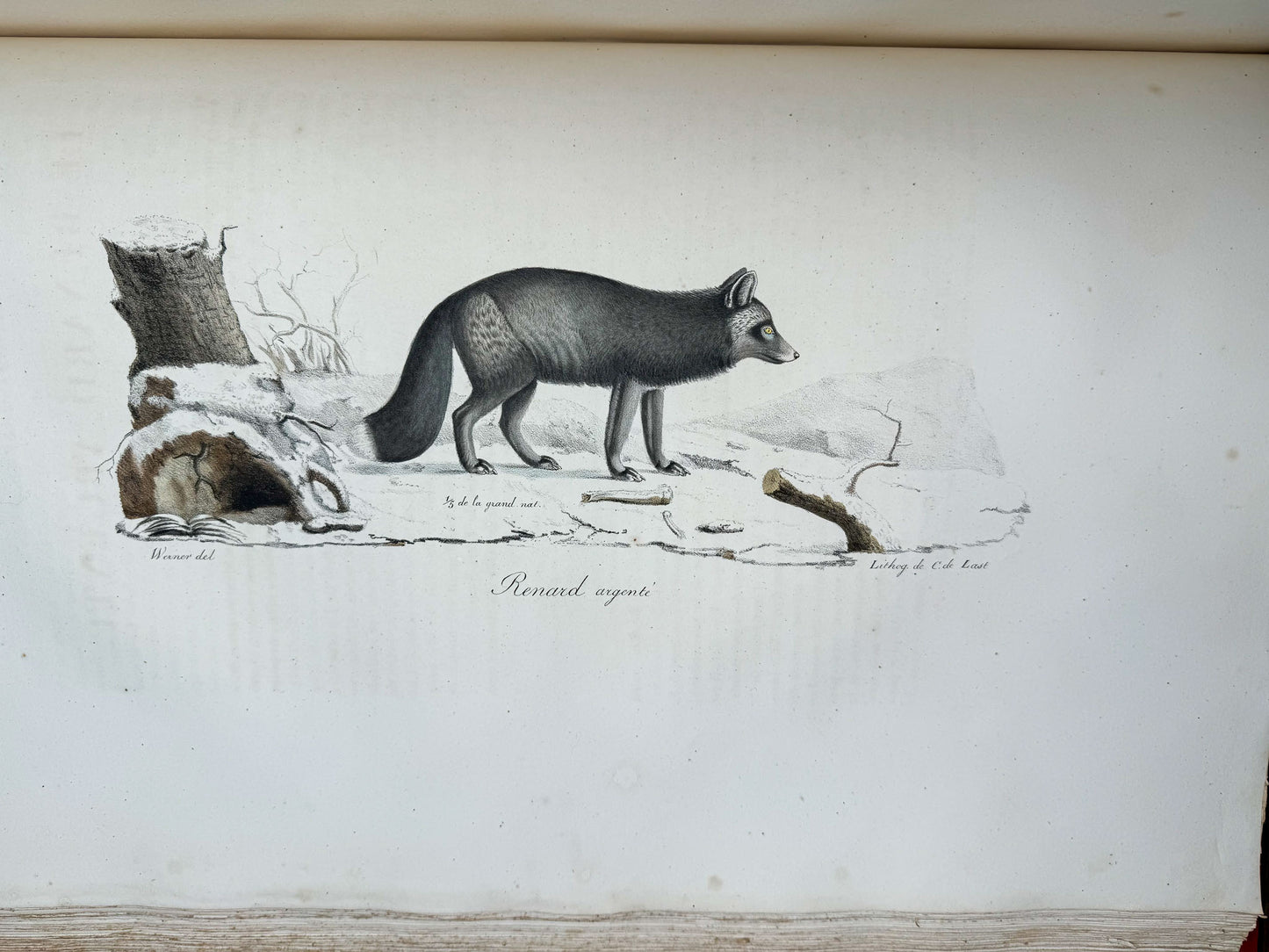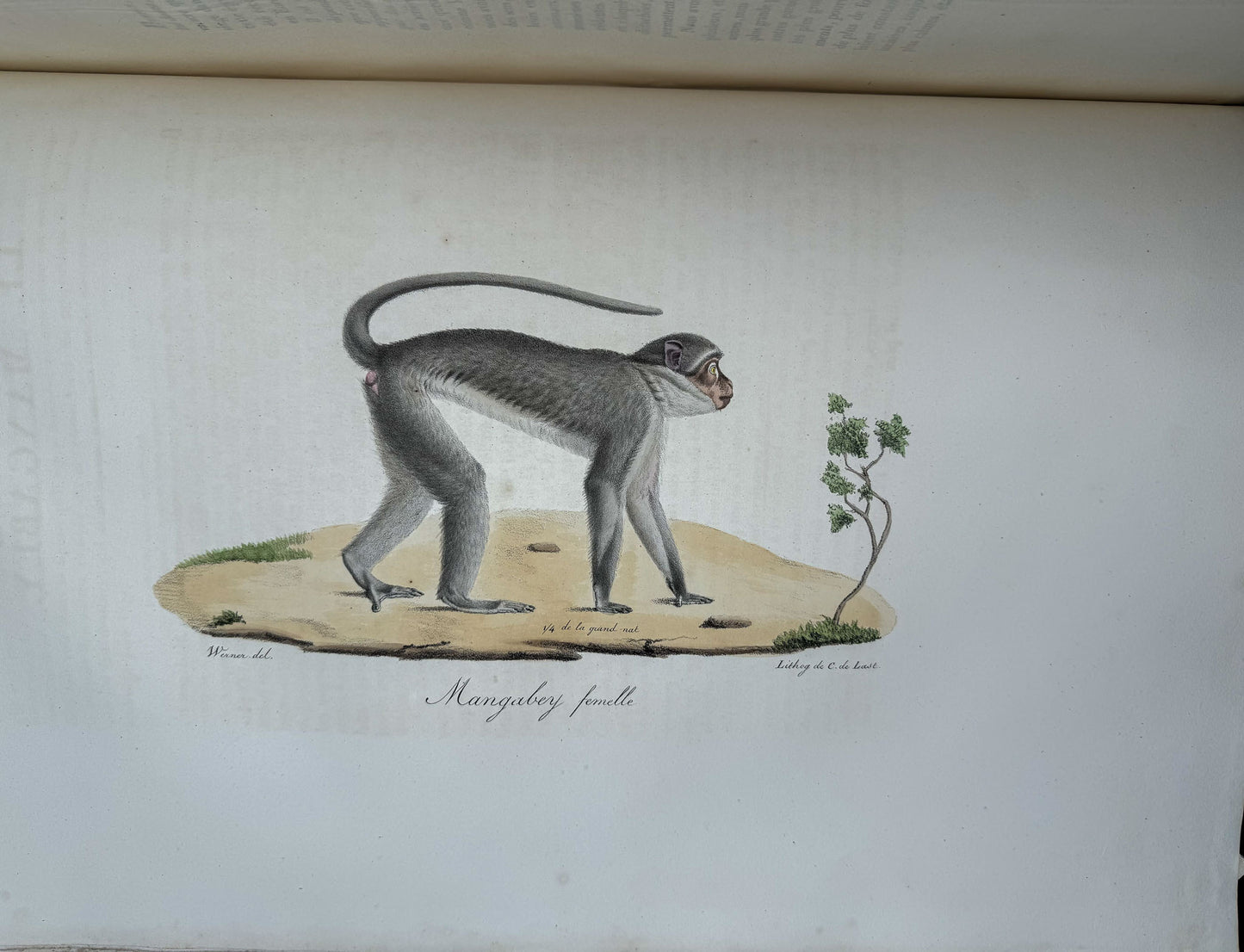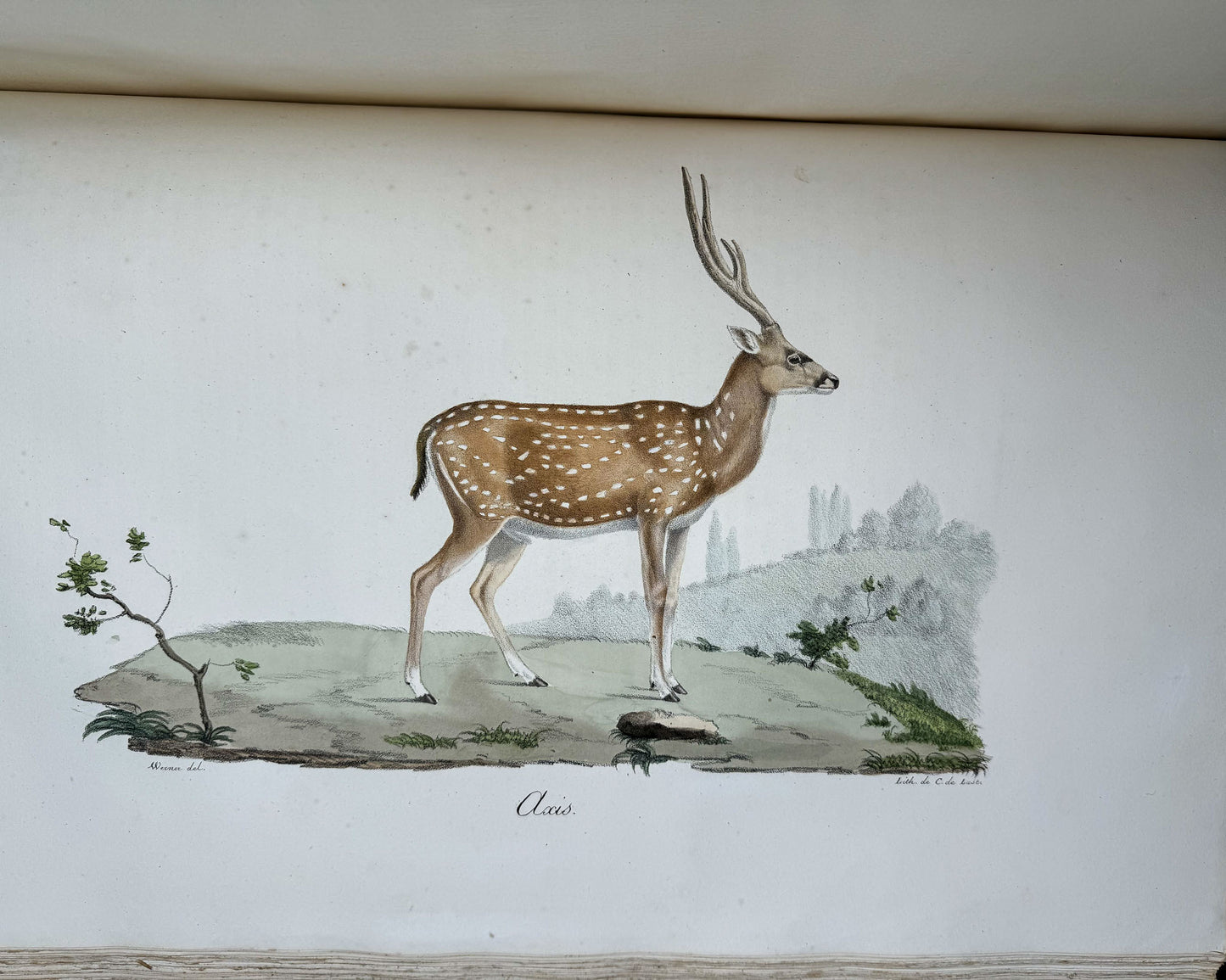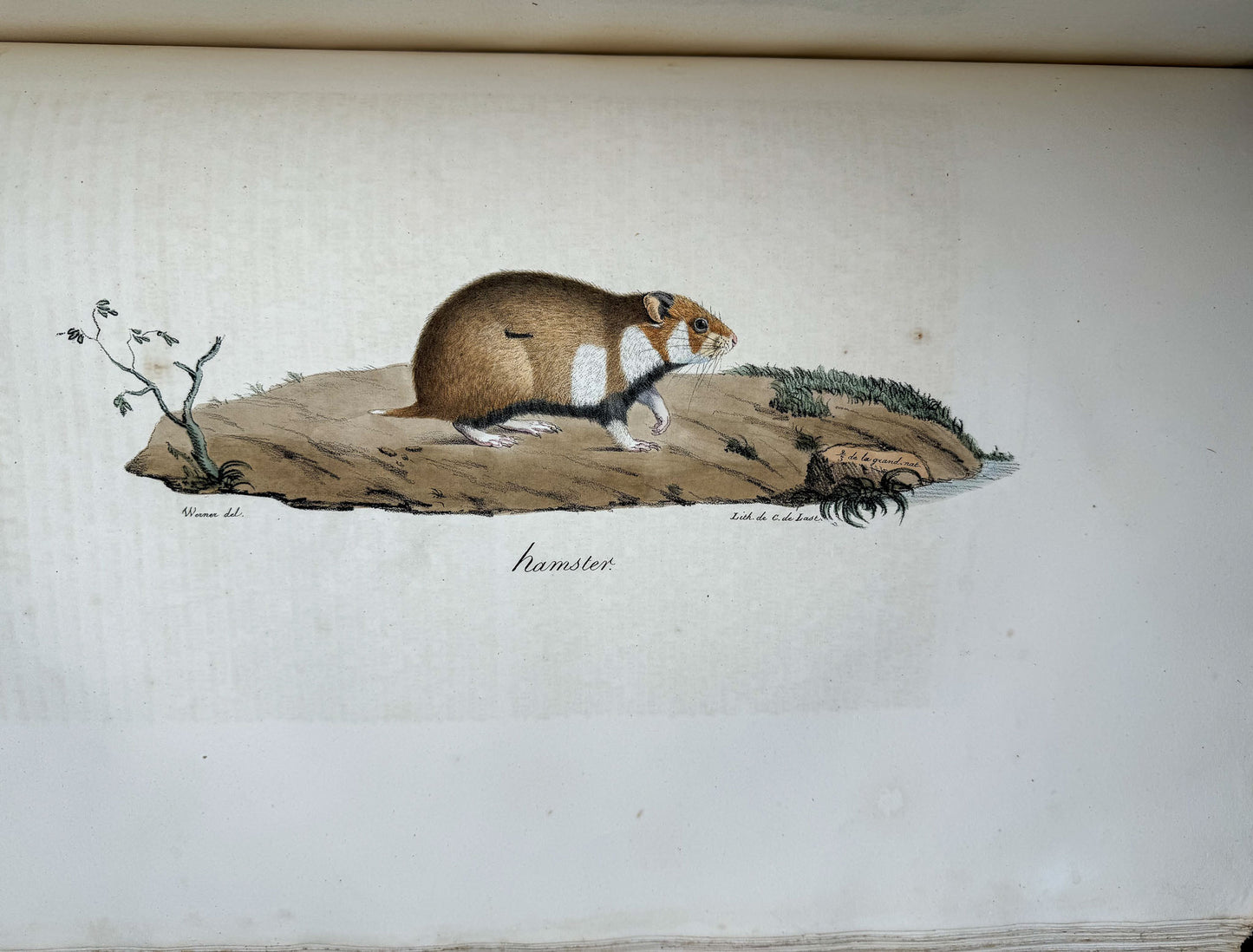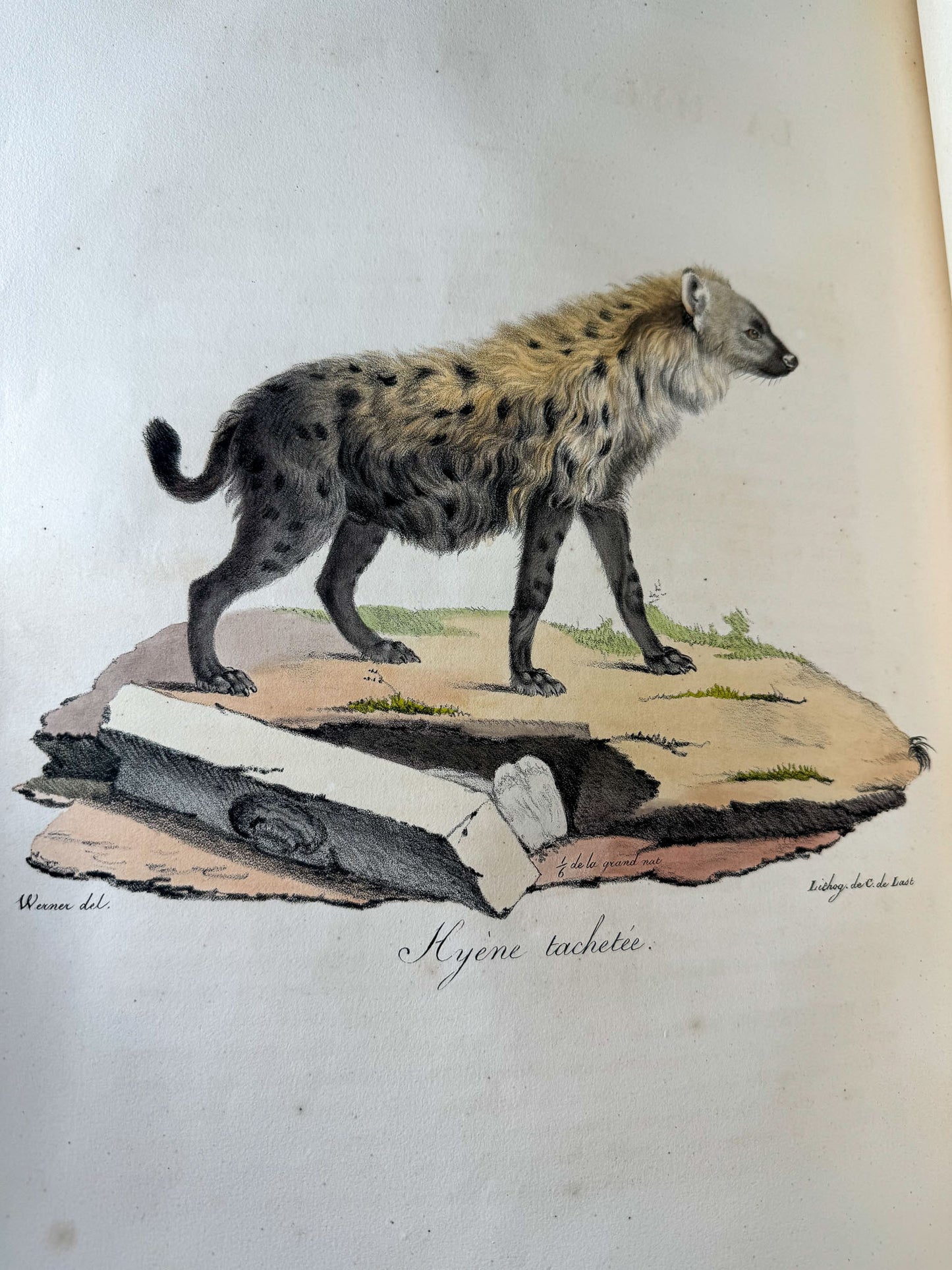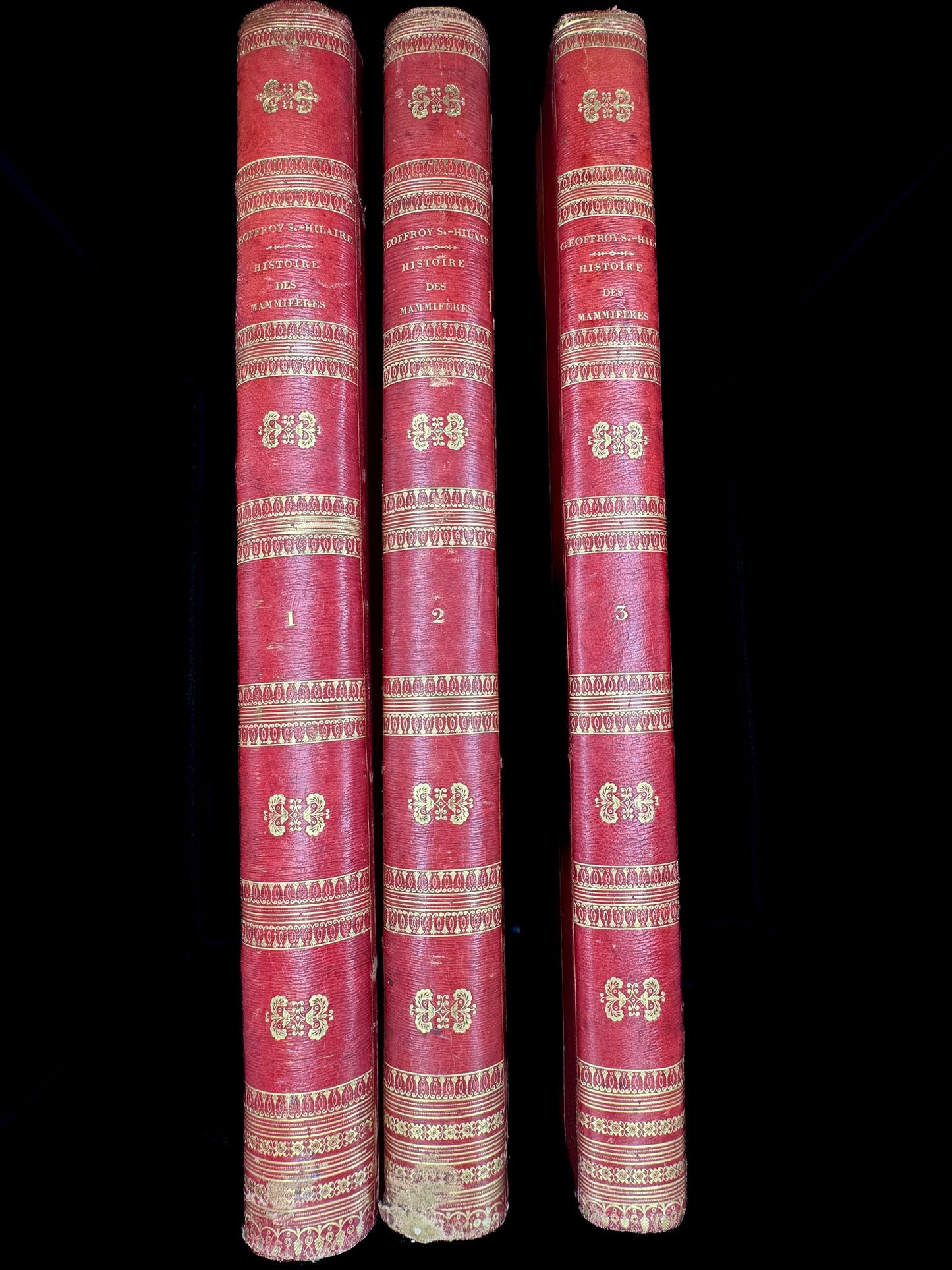Librairie Alexis Noqué
SKU:0162
Geoffroy Saint-Hilaire ; Frédéric Cuvier
Histoire naturelle des mammifères, avec des figures originales enluminées, dessinées après des animaux vivants.
Histoire naturelle des mammifères, avec des figures originales enluminées, dessinées après des animaux vivants.
1818
Vendu
Couldn't load pickup availability
SAINT-Hilaire Geoffroy, CUVIER Georges. Histoire naturelle des mammifères, avec des figures originales enluminées, dessinées après des animaux vivants.
Paris, C. de Lasteyrie, 1818-22.
In-Folio (560 x 370), 3 volumes : Vol. 1 - [3] ff, [72] pl. with 6 additional pl. normally in Vol. 2, [5] ff; Vol. 2 - [2] ff, [66] pl. since 6 pl. are in Vol. 1, [2] ff; Vol. 3 - [3] ff, [72] pl., [1] f. Red half-maroquin corners, smooth spine, gilt roulette, fillet and stippling on the caissons, gilt ornamental iron in the center of the caissons, gold-stamped author, title and tomaison, untrimmed (period binding).
First edition, published in 72 issues between 1818 and 1842.
Our copy, with its wide margins (54 cm), contains the first 36 issues, i.e. 216 lithographed and colored plates (Nissen specifies that the complete work contains 430 or 432 plates). Complete copies of all 72 issues are extremely rare.
“One of the most exact and well-executed works on mammals yet given” (Brunet), whose quality and state of preservation remain absolutely marvelous to contemplate in the present copy. This is also very probably the first appearance of Saartjie Baartman, the Hottentot Venus, in a book intended for a wider public than the scientific world, after Georges Cuvier dissected her corpse in 1815 and wrote about it in his book “Examen du cadavre d'une femme connue à Paris sous le nom de Vénus Hottentote” (1817). The book places Saartjie Baartman in the midst of other mammalian species and compares her to the rest of the mammalian animal kingdom - notably apes. This vision, obviously outdated today, was commonplace in the early 19th century.
Two of the most eminent French zoologists of the time worked on this book: Geoffroy de Saint-Hilaire and Georges Cuvier. In addition to the richly informative scientific details, the sumptuous illustrations were used in numerous other works, including Alcide d'Orbigny's Dictionnaire d'Histoire naturelle and Cuvier's Le Règne animal, whose third edition was posthumously completed by his disciples. The latter third edition is often referred to as Cuvier's Disciple Edition.
Corners dulled, rubbed at edges and spine, boards scratched, marginal epidermis except for the second board of T2, which is more pronounced, probably due to an earlier moisture defect, tear at upper edge of first board of T2. Scattered light foxing, occasionally pronounced, but in this case only on a few pages of text.
Brunet II, 1535 ; Nissen ZBI, 1525 ; Graesse III, p.51.
Share
